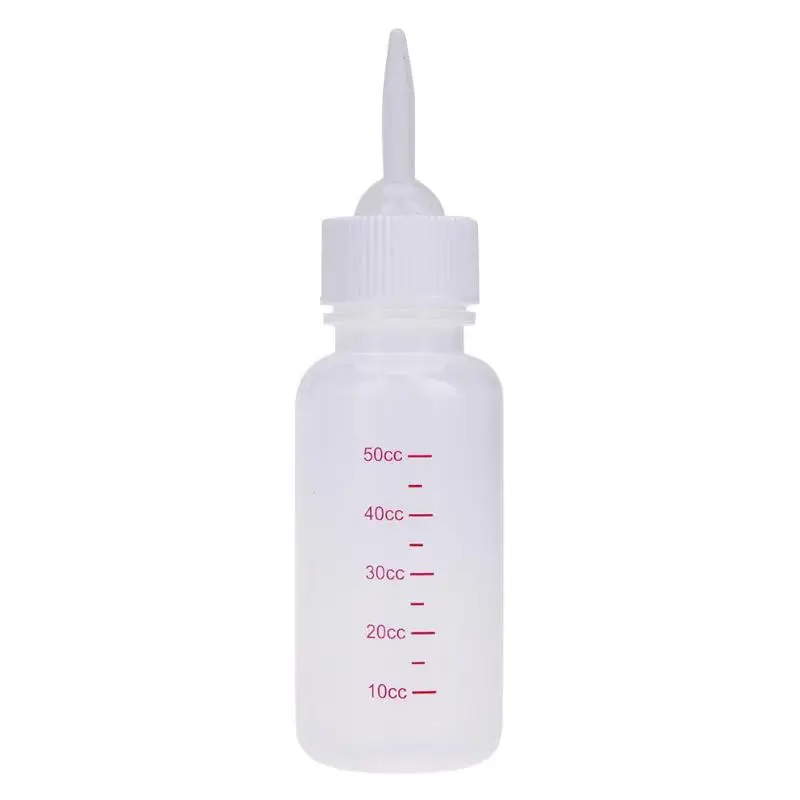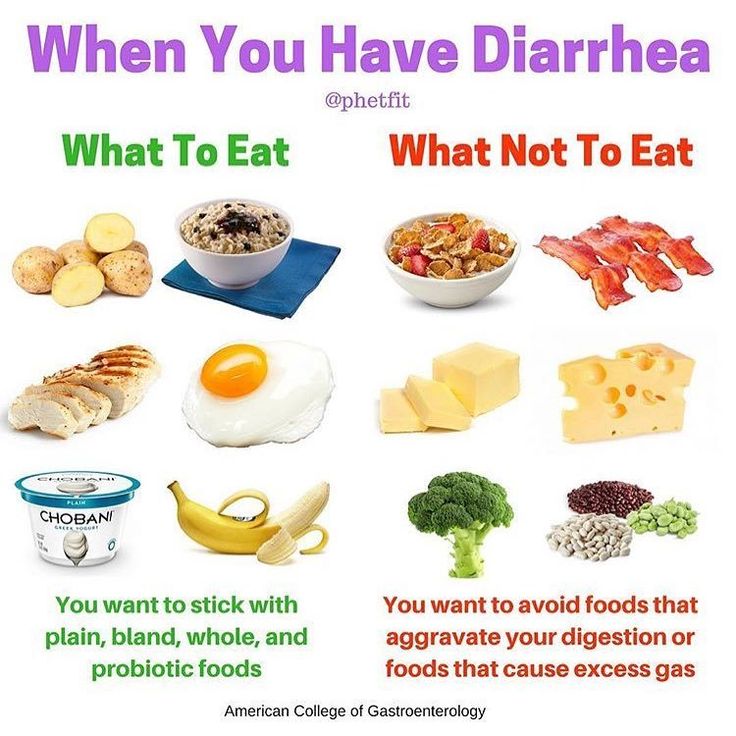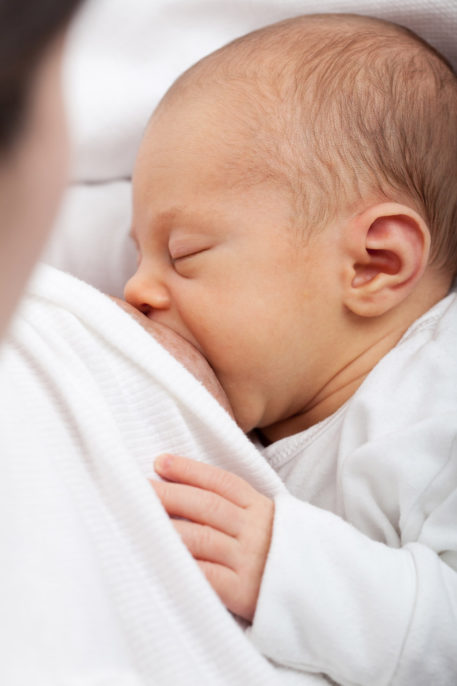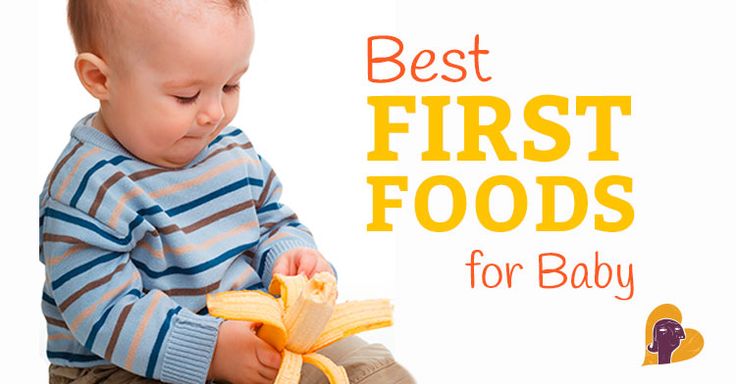Bottle feeding wild baby rabbits
How To Keep A Wild Baby Rabbit Alive — Rabbit Care Tips
Wild newborn bunnies are kept in small, shallow nests in grassy areas near woodland, bushes, or out in the open. While an open space might seem like a dangerous place for a rabbit to set up home, predators are less likely to venture to exposed areas. So, when you stumble across a nest, it’s worrying to see a group of baby rabbits alone.
To keep a wild baby rabbit alive, you must determine whether the mother is around. Mother rabbits only return to the nest twice a day to feed their kits. If they are orphaned, you will need to provide a nest, maintain the right temperature, and provide a healthy diet. You will also need to stimulate urination and defecation and source nutritious cecotropes. Injured bunnies will need immediate veterinary care.
Fewer than 10% of orphaned wild rabbits survive longer than a week. Attempts to care for orphaned rabbits often do more harm than good, so proceed with caution if you find a nest with no mother in sight. You don’t want to intervene until you know that your help will make a difference.
How to Help A Wild Baby Rabbit Survive
Most wild baby rabbits aren’t orphaned. While your immediate reaction may be to call for help, this isn’t always necessary. A doe will never abandon her kits by choice. Death or environmental issues where the nest can’t be accessed are the only reasons why she wouldn’t be around.
As described by the Indiana Department of Natural Resources, cottontail doe rabbits only return to the nest a few times a day to deter predators. Baby rabbits don’t have a scent until they get older. As predators can sniff out the doe, her presence puts her babies in danger.
The doe will leave her babies hidden and camouflaged in the nest to protect them, returning between dusk and dawn to feed her young.
Feeding is quick and only takes between 2-3 minutes, making it difficult to tell whether the baby rabbits are orphaned or not. If you suspect that a baby rabbit is orphaned, look out for the following signs:
- A sunken stomach, which indicates that the bunny isn’t feeding.
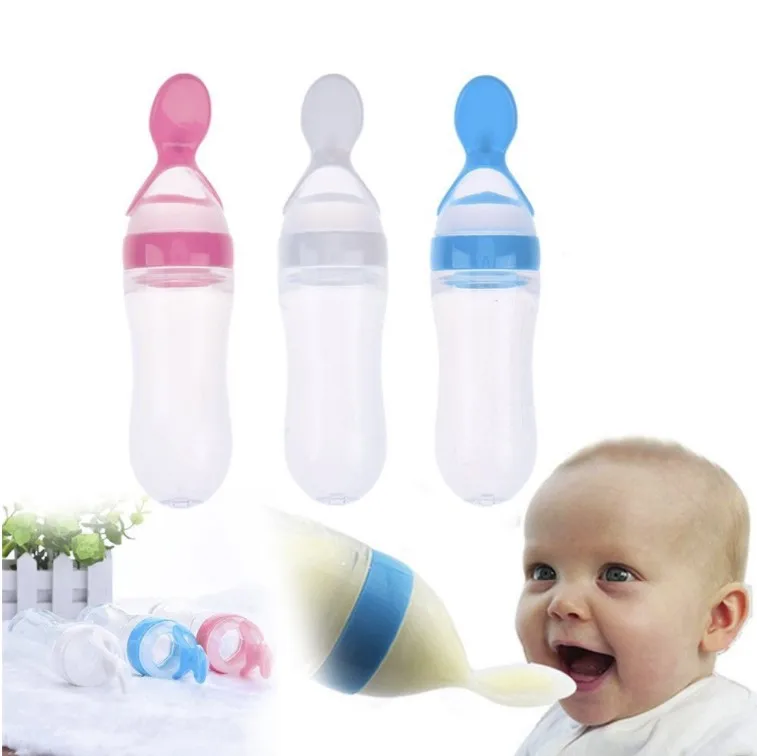 Well-fed rabbits should have a full, rounded abdomen.
Well-fed rabbits should have a full, rounded abdomen. - The bunny doesn’t try to run away from you but seems sluggish and unhealthy.
- A healthy pink skin tone. Bunnies with wrinkled or thin, blue skin are likely to be starving.
- Vocalization indicates that the baby rabbit is frightened and hungry. Healthy rabbits are usually silent because they know that noise attracts predators.
To be sure whether the baby rabbits are orphaned, carry out the string test. For this, you’ll need a few pieces of cotton or string. Place them over the nest in a pattern you can easily remember (or take a picture) and leave it overnight.
If the string has moved in the morning, the mother rabbit has been back to feed her kits. If not, the bunnies are likely orphaned. At this point, you’ll need to call a wildlife rehabilitator for advice.
Build A Nest
If you know the mother is still caring for her babies, leave the nest alone. If you disturb a nest and discover that the doe is still around, remake it and leave the baby rabbits where you found them. Despite some misconceptions, a mother won’t abandon her kits if you touch them.
Despite some misconceptions, a mother won’t abandon her kits if you touch them.
On the other hand, if the doe is no longer around, you’ll need to provide a nest for the baby rabbits to survive.
The nest’s primary purpose is to keep the kits warm. A mother rabbit builds her nest using fur, dry leaves, and grass. She then covers it using more dried grass and hair. Baby rabbits only live in the nest for three weeks, so you don’t need to provide a makeshift nest for long.
The University of Miami advises that creating a nest as close as possible to the one a mother rabbit would make is best. Use a shallow cardboard box and fill it with clean cotton wadding or bunny fur (if you can find some). Then, cover the top of the box with a small, light towel, allowing a little gap for air to get in.
Multiple orphaned bunnies will snuggle to keep warm, so you mustn’t use an electric heating pad as they can be dangerous.
However, if your orphaned bunny is on its own, you can provide heat using a warm water bottle wrapped in a soft towel.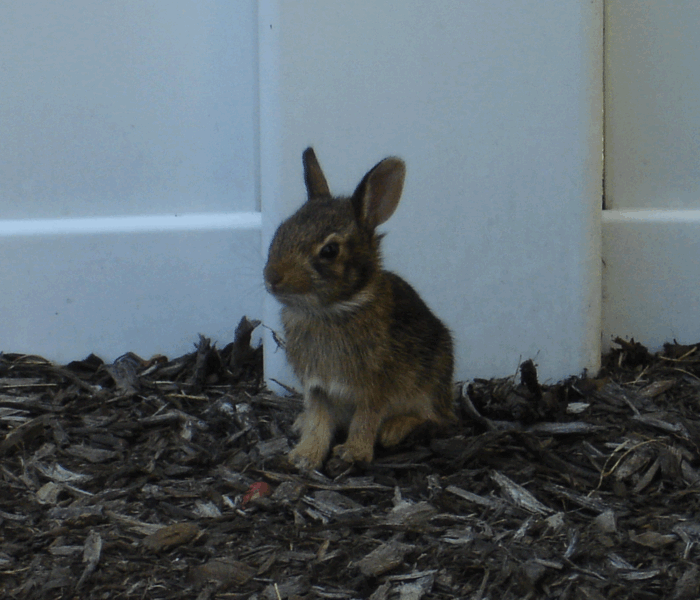 Ensure that the bunny can move away from the bottle if it gets too hot.
Ensure that the bunny can move away from the bottle if it gets too hot.
Maintain the Right Temperature
A baby rabbit’s body temperature is higher than ours. Bunnies need to feel warm to survive. If they get too cold too quickly, they will become unwell and may even stop moving.
To keep your orphaned bunnies healthy, keep the nest at 95-98 degrees for the first 2 weeks. After 2 weeks, you can lower the temperature by 3-5 degrees each day until you reach room temperature, which is around 68-72 degrees.
As a wild bunny grows older, protect it from extreme cold and heat. As described by Vetstream, rabbits are unable to sweat or pant and cannot dissipate efficiently. As a result, high temperatures can lead to life-threatening hyperthermia.
Feed the Wild Rabbits
Where the doe isn’t present, a baby rabbit will need hand feeding. Rabbits rely on milk to survive, so they should be fed kitten milk replacer or Meyenberg goat milk.
Cow’s milk might seem like a healthy choice, but it’s full of hormones, blood, pus, lactose, and traces of medication, which baby rabbits can’t digest. Rabbits are unable to vomit and, as a result, their sensitive stomachs can’t remove toxic substances from the body.
Milk is all a rabbit will consume for the first two weeks of its life. At two weeks, a bunny will start eating solids. From 4 weeks old, a bunny will eat the same food as its mother. However, milk will still play a vital part in the diet for the first six weeks, so make this a staple part of the bunny’s diet.
How to Make A Substitute Bunny Milk Formula
If you don’t have access to kitten milk replacer, you’ll need to make an orphaned bunny milk formula. It’s easy to do following this recipe:
- Mix one cup of goat milk with 56 grams of powdered goat milk.
- Add one tablespoon of sugar-free whipping cream to make the formula richer and contain more calories.
- Heat the formula to 98-100 degrees Fahrenheit.

- Leave the formula to cool slightly before feeding the rabbit.
While a pre-mixed milk replacement is much easier to use, the above recipe is a nutritious alternative when a ready-made formula isn’t available. It also contains the same vital nutrients as the mother rabbit’s milk so will help the bunny grow up strong and healthy.
How Many Times to Feed
Baby rabbits should be fed the following volumes of milk twice a day:
- Newborn to one week: feed between 22 ½ ml of milk per feeding.
- 1-2 weeks: feed between 5-7 ml of milk during per feeding. If the rabbit is particularly small, reduce the amount of milk to suit the size.
- 2-3 weeks: feed between 7-13 ml of milk per feeding.
- 3-6 weeks: feed between 13-15ml of milk per feeding.
Pay attention to how much the baby rabbit feeds as you may need to adjust the amount of milk given. Also, feed the baby rabbit at the same times each day to help form a solid routine.
How to Feed
Baby rabbits lay on their backs while feeding from their mothers. To help a baby rabbit to survive, you’ll need to replicate this process.
Before feeding, wrap your rabbit in a soft cloth or hand towel and lay it gently in your gap. Ensure the baby rabbit isn’t laying straight back but is sat slightly upright so that the fluid doesn’t fill its lungs.
The first and easiest way to feed your baby rabbit is by syringe. 1ml syringes are best for newborn kits, while 2ml syringes are suitable for rabbits over three weeks old. To use, simply draw the right amount of milk out and release it slowly into the corner of its mouth.
However, you might find that the baby rabbit takes to a bottle better. When using a bottle, make sure it is completely sterile before use and place the nipple into the corner of the rabbit’s mouth. Slowly release the milk quantity to the correct level – you mustn’t overfeed.
Finally, a small, shallow dish is ideal for bunnies over two weeks old.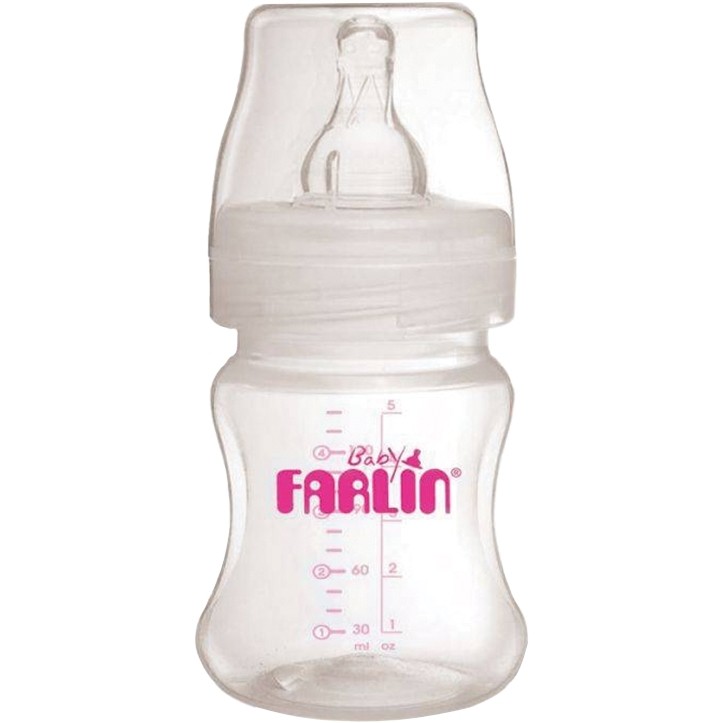 Raise it about an inch off the floor and encourage the bunny to lap the formula by placing a drop or two onto your fingers. Never leave the dish out as the bunny could drown.
Raise it about an inch off the floor and encourage the bunny to lap the formula by placing a drop or two onto your fingers. Never leave the dish out as the bunny could drown.
Whichever way you choose to feed, be careful to go at the rabbit’s pace as feeding it too quickly can lead to suffocation.
Stimulate Urination and Defecation
Baby rabbits can’t release urine or feces until they open their eyes after ten days. In the wild, a mother rabbit stimulates her baby’s belly and anogenital region with her tongue. Where a doe is absent, you’ll need to help the rabbit relieve itself each time it’s fed. Follow these steps to help your orphaned rabbit urinate and defecate:
- With sanitized hands, wet a cotton ball with lukewarm water.
- Pop the bunny on its back, keeping it secure, and gently rub its genital area and abdomen. After a little while, the rabbit should begin to relieve itself.
- Clean up any urine or poop with a new, clean cotton ball.
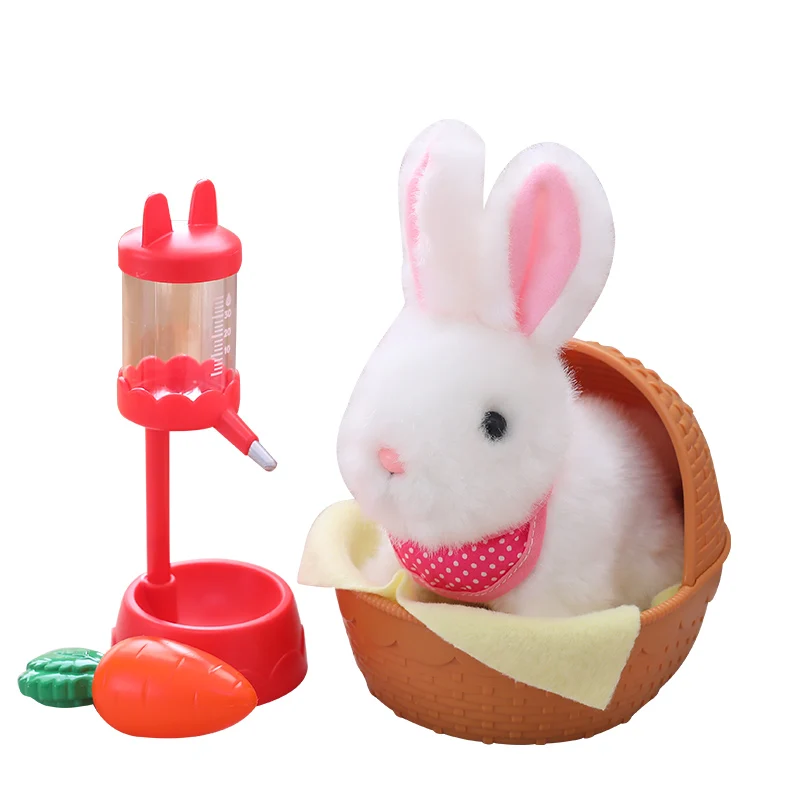
- Make sure the bunny’s urine and feces look healthy and regular. If not, seek help.
After the bunny opens its eyes, it will begin to urinate and defective for itself. But this step is an important one, as newborn rabbits can become unwell if it’s unable to empty its bladder and bowels.
Provide Cecotropes
Cecotropes are an essential part of any rabbit’s diet. They’re grape-like droppings formed in the cecum and provide a range of nutrients and good bacteria that protect against pathogens.
Immediately after producing them from the anus, rabbits eat the cecotropes. While unpleasant to us humans, this is entirely normal. If your bunny is producing and consuming them naturally, there’s nothing else for you to do.
However, if no cecotropes are being produced, sourcing them from a healthy adult rabbit provides a rich source of nutrients to help the bunny grow strong and healthy.
To get them into the newborn bunny’s digestive system, mix them with kitten milk replacer and feed the rabbit as per the recommended amount for its size and age.
Caring for An Injured Wild Baby Rabbit
Finding an injured rabbit adds another layer of complexity. An orphaned wild rabbit’s survival rate is already low, so you’ll need to move quickly to save the rabbit from further pain and distress.
In any case, calling a wildlife rehabilitator is essential. In the meantime. follow these care tips for the most common types of injuries:
Rabbit Is Dragging Back Legs
If a wild orphaned bunny is dragging its back legs, it’s likely suffering from a spinal cord injury, paralysis, or hind leg weakness. Though, muscle failure is attributed to old age, so this is an unlikely cause of a newborn bunny’s poor back leg function.
If you know the bunny hasn’t suffered a broken spine, the following causes are possible:
- A disease, such as cancer and spinal osteoarthritis, which can wear down the spine over time.
- Parasitic, bacterial, or fungal infection. Encephalitozoon cuniculi is one of the most common types of parasitic infection.

- Natural and human-made toxins.
- Trauma to the spine. This could be from a predator or someone unknowingly stepping on the nest.
If you’ve already determined that the mother rabbit is no longer around, you’ll need to take the bunny to the vet to be checked over. Prognosis depends on the amount of damage that has occurred.
If the damage is irreversible, the rabbit won’t be able to survive in the wild and may need constant human car. Sometimes, euthanasia is the kindest outcome where the rabbit has no quality of life.
Rabbit Keeps Falling Over
A newborn bunny may fall over for a variety of reasons. Muscle spasms, bacterial and parasitic infections, ear infections, and trauma can cause a rabbit to develop head tilt. Head tilt often gives the illusion that the rabbit is drunk as it struggles to stand.
One of the biggest problems with head tilt is that the bunny struggles to eat on its own. Head tilt caused by E. cuniculi is incurable. Medications can help manage the disease, but it is contagious, so the litter must be separated.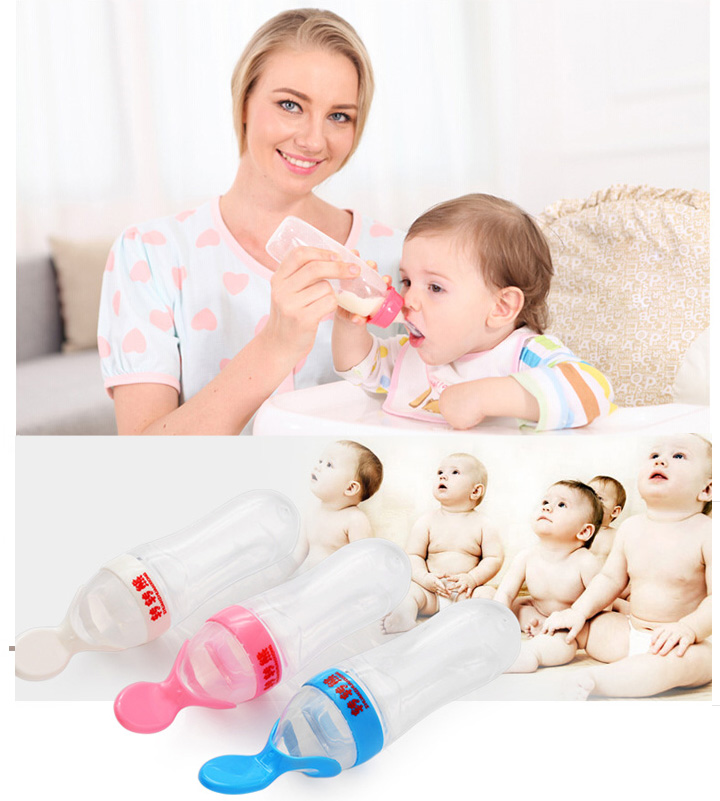
Head trauma and infections are other common causes of unbalance in baby rabbits. The latter is likely to cause problems throughout the bunny’s life, whereas bacterial and parasitic diseases are usually easy to treat with antibiotics.
Contact with wild rabbits or dirty and unsanitary conditions are the most likely causes in newborn rabbits. While rarely fatal, it is serious and must be treated by a vet.
Rabbit Is Lethargic
Dehydration and starvation are the most common causes of lethargy – especially if the mother has been gone a while. Similarly, if a baby rabbit refuses to eat, lethargy is likely to follow.
Without proper nutrition, baby rabbits have little energy and will spend most of their time resting to conserve what they do have. When this happens, you won’t see the bunny move very often, which is a case for concern in itself.
Statis, which is the slowing of food through the GI tract, is another cause of tiredness and low energy. Symptoms include excessive gas and soft stools or diarrhea.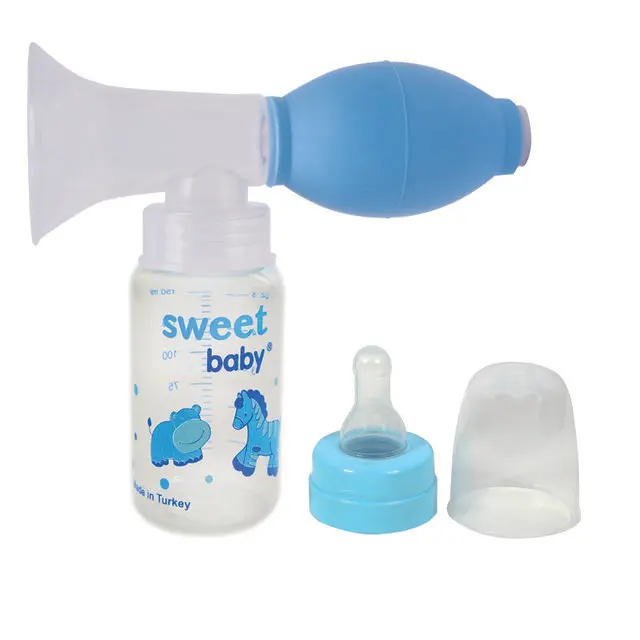 The bunny might also exhibit signs of pain, like teeth grinding and a hunched posture.
The bunny might also exhibit signs of pain, like teeth grinding and a hunched posture.
Lethargy is also an indication of other, more serious health problems, so have the bunny checked over in case of something else is going on.
Rabbit Isn’t Moving
If the orphaned baby rabbit you’ve found isn’t moving, check to see if it’s still breathing. If the rabbit has its head arched back and mouth open, it’s probably too late to save it. However, if the bunny hasn’t reached this state, it’s possible to revitalize it.
The first step is to keep it warm, especially if the animal is cold to touch. Keep it close to you to transfer your body heat or wrap it in a soft hand towel until it starts to wriggle and show signs of life.
Once the bunny has perked up, place it back into the nest to recuperate. If there is more than one rabbit, they will huddle together to keep warm. Otherwise, provide extra heat using safe methods to help the bunny maintain a healthy body temperature.
If the mother is still alive and you’ve carried out the above steps, place the bunny back into the nest and cover it with grass. Touching the nest won’t cause the mother to abandon the babies. Instead, she will return to feed them as nature intends.
Rabbit Has Been Attacked
Occasionally, you might find that a predator has attacked a baby rabbit. Even if the mother is present, the bunny will need help to prevent the wound from becoming infected; otherwise, it will only worsen.
If the wound looks fresh, it’s possible to clean it using an antiseptic solution to prevent infection. But if the injury appears old, swollen, yellow, or is oozing pus, it’s best to take the bunny to a vet for antibiotics.
Once the injury has been successfully treated, it should be safe to place the baby rabbit back into the nest. The vet will provide the bunny with milk to tide it over until the mother returns.
Caring for wild baby rabbits is a challenging task and requires around the clock attention.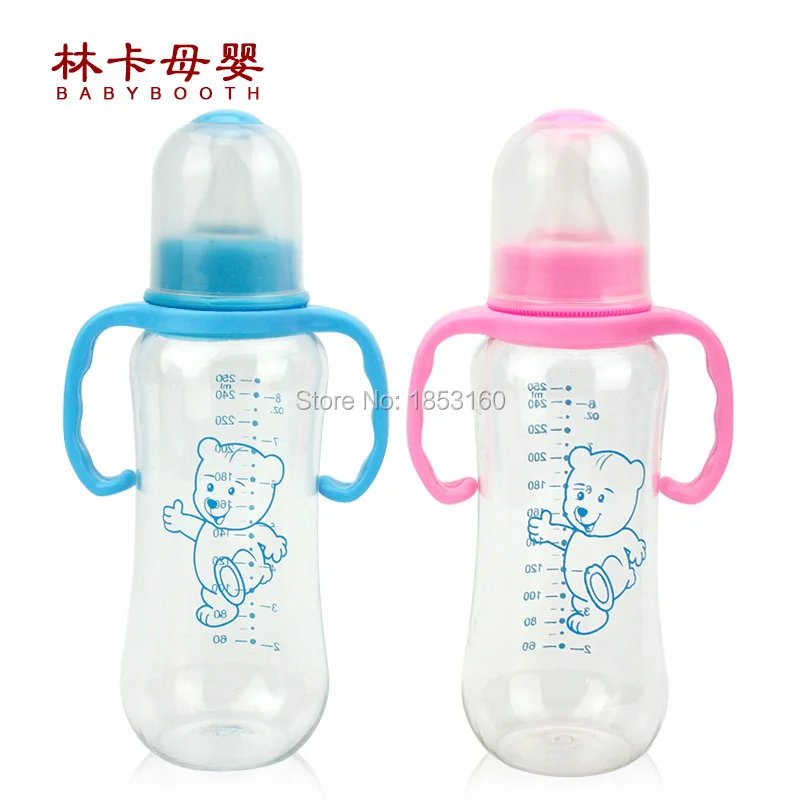 Newbies shouldn’t attempt any form of care without expert advice – and even then, success isn’t guaranteed. If the rabbits are orphaned, they’re unlikely to survive without their mother. However, some baby bunnies with health issues simply need a helping hand.
Newbies shouldn’t attempt any form of care without expert advice – and even then, success isn’t guaranteed. If the rabbits are orphaned, they’re unlikely to survive without their mother. However, some baby bunnies with health issues simply need a helping hand.
Caring For Orphan Baby Rabbits
Wild Baby Bunnies – Orphaned or Not?
Wild baby bunnies are most often not orphaned! Many people mean well when they contact HRS after discovering an “abandoned” nest of wild rabbits. Often they wish to “rehabilitate” them with some advice from others. The reality is fewer than 10% of orphaned rabbits survive a week, and the care that people attempt to provide can be illegal, unnecessary, and potentially harmful.
The best thing you can do is put the bunny right back where you found him, in the general area, as the mom will only come back at night to call and find him. Leave the area. If injured, please contact a wildlife rehabber or rabbit vet immediately! You can search Google for your state/country and wildlife rehabber.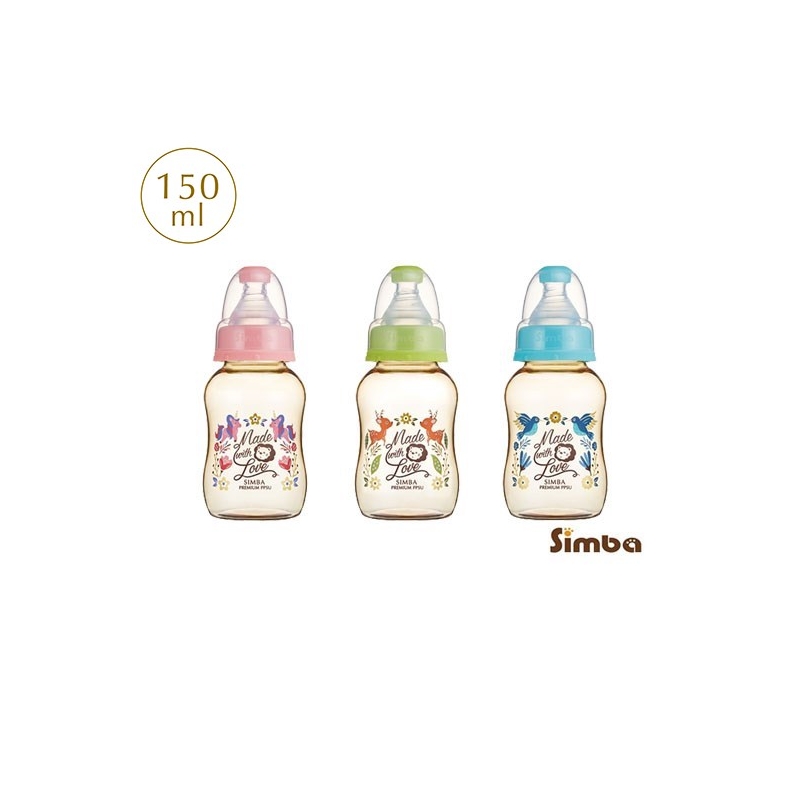 Also search your state + wild rabbit rehabbers. You can call your Humane Society for referral and also check here: http://www.owra.org/find-a-wildlife-rehabilitator If you find a baby with eyes open, and he appears healthy, leave him be.
Also search your state + wild rabbit rehabbers. You can call your Humane Society for referral and also check here: http://www.owra.org/find-a-wildlife-rehabilitator If you find a baby with eyes open, and he appears healthy, leave him be.
I/My Dog/My Cat Found a Rabbit Nest! What Do I Do?
Rabbits hide their nests in plain view, often putting them in the open, sometimes in the middle of the lawn, as well as in brush piles and long grass. If you find a nest that has been disturbed, do all you can to restore and protect it. Do NOT bring it inside. If a dog has discovered the nest, keep your dog away from the area and reconstruct the nest with grasses. If need be, you can move the nest a few feet away where safer, even up to 5-6 feet away. A moved nest should always be covered with string in a tic tac toe pattern and monitored to be sure the mother found it and came back to the babies. She will scrabble away the surface area to feed her babies beneath her and then scrabble the earth, grass, leaves, back over the nest to hide it again so it’s pretty easy to see if the string has been disturbed and if the babies are warm.
Baby jackrabbits wait like this for momBabies should never be put back into a nest that has been flooded with water, has bugs/ants visibly crawling in and out, or if a baby has been killed and there is blood in the nest. Use common sense. Baby bunnies who have fleas are compromised and should be immediately taken to a wildlife rehabber or humane society, rabbit vet.
Rabbit mothers nurse their babies for approximately 5 minutes a day. Both wild and domestic mothers will be in the nest early in the morning and then again in the evening. The milk is very rich and the babies “fill up” to capacity within minutes. Mother rabbits do not “sit” on the babies to keep them warm as do some mammals and birds. They build a nest with fur and grasses which helps to keep the babies warm in between feedings. For domestic/pet rabbits, do not force a mother rabbit to sit in the nest box. You can pick up the babies and see if they are feeding by checking the size of their stomachs (should not be sunken in), the pinkness of their skin and activity level (they should not be blue in color or sluggish in movement) and the amount of time that you hear them crying (baby bunnies should be quiet most of the day…. if they are crying constantly then they are not getting fed). If you come across a nest of wild bunnies, and the mother is nowhere to be seen, please DO NOT disturb them.
if they are crying constantly then they are not getting fed). If you come across a nest of wild bunnies, and the mother is nowhere to be seen, please DO NOT disturb them.
If your dog disturbs a nest, or you find a wild bunny with his eyes open, please put him back if not injured. Mom will be coming back at night to call and feed him only once in the middle of the night. Do not take the bunny inside or feed him! IT IS A MATTER OF HIS/HER SURVIVAL AND UP TO US AS HUMANS TO LEAVE NATURE BE AND LET THE MOM CARE FOR HER YOUNG. We often hear of mothers moving their babies and their nests, and have seen moms come back every night for up to a week to look for her missing baby. Do not take the baby from the mom or she will be frantic. Many call or write saying, “… but it is raining, etc., ” but remember, these are wild bunnies and belong out there.
I/My Dog/My Cat Destroyed a Wild Rabbit Nest! What Do I Do?
Remake the nest as best you can with grasses, hay, straw in the same place.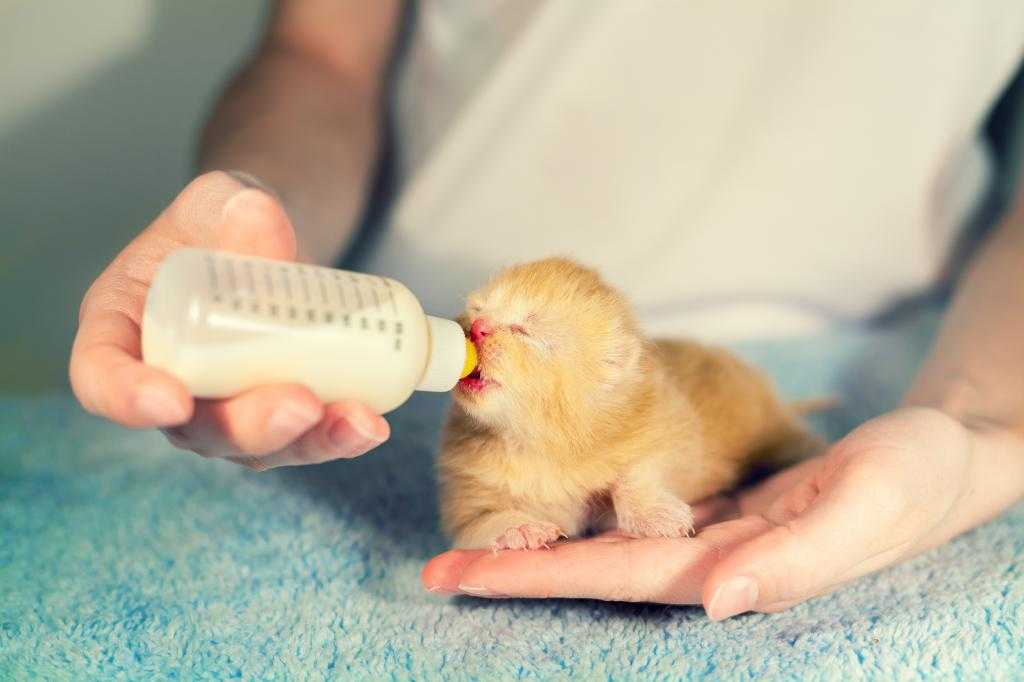 Nests can be moved to a safer place up to 10′ away from the original site and can be reconstructed if necessary. To make a new nest, dig a shallow hole about 3″ deep and put into it as much of the original material as you can recover, including the mother’s fur. Add dried grass as needed, and put the young back. Mother rabbits return to the nest to nurse only at night, staying away as much as possible so as not to attract predators. To determine if the mother is returning, create a tic-tac-toe pattern over the nest with straw, grasses or tiny twigs. Wait 24 hours to see if the twigs have been disturbed. She may be able to feed them without moving the twigs much, so double check–If the babies look healthy, are warm, then the mother is coming back. If they are cold, dehydrated, get them to a professional; do not care for them yourself. Please contact a Wildlife Rehabber or rabbit vet or Humane Society immediately. Google your state and wildlife rehabbers.
Nests can be moved to a safer place up to 10′ away from the original site and can be reconstructed if necessary. To make a new nest, dig a shallow hole about 3″ deep and put into it as much of the original material as you can recover, including the mother’s fur. Add dried grass as needed, and put the young back. Mother rabbits return to the nest to nurse only at night, staying away as much as possible so as not to attract predators. To determine if the mother is returning, create a tic-tac-toe pattern over the nest with straw, grasses or tiny twigs. Wait 24 hours to see if the twigs have been disturbed. She may be able to feed them without moving the twigs much, so double check–If the babies look healthy, are warm, then the mother is coming back. If they are cold, dehydrated, get them to a professional; do not care for them yourself. Please contact a Wildlife Rehabber or rabbit vet or Humane Society immediately. Google your state and wildlife rehabbers. Also check http://www.humanesociety.org/animals/resources/tips/find-a-wildlife-rehabilitator.html and http://www.owra.org/find-a-wildlife-rehabilitator
Also check http://www.humanesociety.org/animals/resources/tips/find-a-wildlife-rehabilitator.html and http://www.owra.org/find-a-wildlife-rehabilitator
How Do I Know If the Wild Baby Bunnies Need Help?
Very young wild baby bunnies with eyes closed and ears back rarely survive in captivity, even given the most expert human care; and so it is very important to determine whether they really need help. Try to assess whether the infants seem warm and healthy or cold, thin, and dehydrated. One test for dehydration is to gently pinch the loose skin at the back of the neck. If it does not spring back in one second, or stays in a “tent,” the bunny is SEVERELY dehydrated and needs rehabilitation IMMEDIATELY by a professional rabbit vet or rehabber. Another test is to stroke the genital area to stimulate elimination if the eyes are closed. If the pee is brown and gritty, the mother rabbit has not been there to help the bunnies urinate. The brown, gritty urine is toxic, and the infant bunny must be cared for by a professional. Please contact a Wildlife Rehabber or rabbit vet immediately. Google your state and wildlife rehabber, call your Humane Society, and also check http://www.humanesociety.org/animals/resources/tips/find-a-wildlife-rehabilitator.html and http://www.owra.org/find-a-wildlife-rehabilitator.
The brown, gritty urine is toxic, and the infant bunny must be cared for by a professional. Please contact a Wildlife Rehabber or rabbit vet immediately. Google your state and wildlife rehabber, call your Humane Society, and also check http://www.humanesociety.org/animals/resources/tips/find-a-wildlife-rehabilitator.html and http://www.owra.org/find-a-wildlife-rehabilitator.
Older baby bunnies who are found outside of the nest may not be orphaned or in need of assistance. This is most often the case. Baby cottontails are born without fur but develop a full coat in a week. Their eyes open in 10 days, and in three to four weeks they are weaned. At this age, they may explore the world outside of the nest but return there to sleep. They are not ignored by the mother but stay with the family group until four or five weeks of age. To determine whether a bunny of this age needs assistance, first see if the bunny feels cold to the touch; perform the dehydration test. Also look for bleeding, convulsing, fly larvae, broken limbs; if any, get to a rabbit vet or emergency vet immediately. If he is just out and about, leave him be. He is discovering his world, waiting for mom to return at night when we humans are asleep. Don’t assume because he is letting you pick him up, he needs help. They are prey animals, taught to freeze when a predator (or human) approaches. Leave him be!
Also look for bleeding, convulsing, fly larvae, broken limbs; if any, get to a rabbit vet or emergency vet immediately. If he is just out and about, leave him be. He is discovering his world, waiting for mom to return at night when we humans are asleep. Don’t assume because he is letting you pick him up, he needs help. They are prey animals, taught to freeze when a predator (or human) approaches. Leave him be!
What if the Baby Bunny is Injured?
Either call or take him to your local rabbit vet, humane society or animal shelter/animal control. Call first as often they will come pick up the baby. If after hours, contact a local emergency rabbit vet or rabbit vets found here and also here. The best thing you can do for an injured wild baby bunny is to get in touch with a skilled Wildlife Rehabber by searching your state/country and wildlife rehabber, or calling your Humane Society, and or trying this link http://www.humanesociety.org/animals/resources/tips/find-a-wildlife-rehabilitator.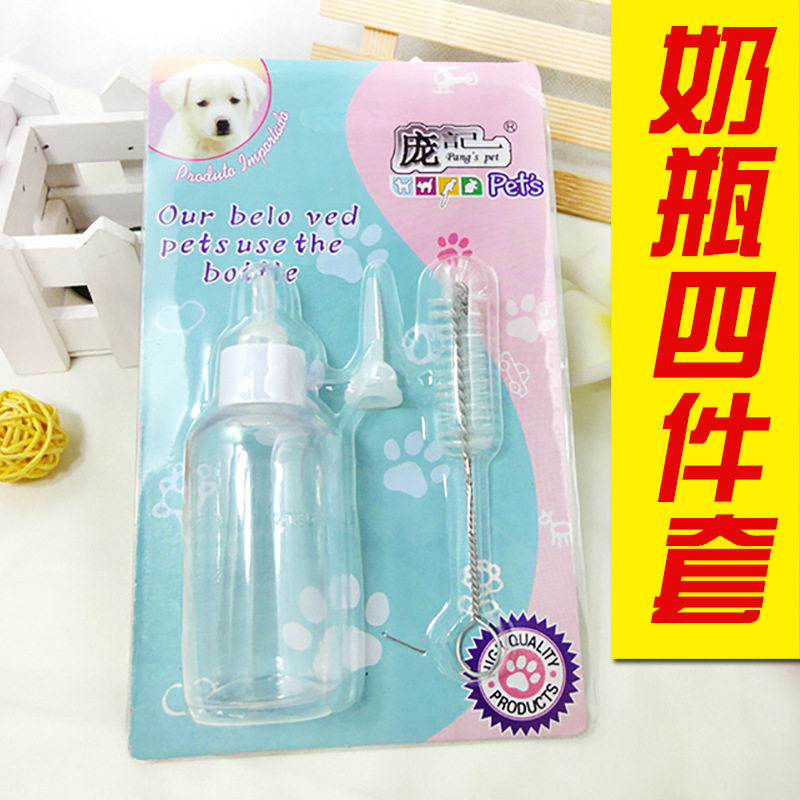 html and http://www.owra.org/find-a-wildlife-rehabilitator
html and http://www.owra.org/find-a-wildlife-rehabilitator
Is there anything I can do to avoid orphaning wild baby bunnies?
The harsh reality is that many of us who care about wild baby bunnies may be contributing to the suffering and death. House cats who roam outside will kill about every other time they go out. And unlike feral cats who hunt because they are hungry, and kill immediately, house cats maul and torment their prey, sometimes skinning baby bunnies alive. Cat owners need to provide managed outdoor habitats for their cats – such as window boxes or pens. Providing a bell on your cat will help warn the wildlife if you cannot keep him inside. Keep your dogs on a leash with you if you see a rabbit nest.
Lawn chemicals can produce convulsing death in baby rabbits. According to the Poison Control Center for Animals, lawn applications that contain herbicides are not directly toxic to small animals; but they may make toxic plants more palatable to them and may make the animals sick for a few days. Products which contain insecticides, such as Dursban or Diazinion, which are added to many lawn products to control fleas or grubs in the lawn, are toxic.
Products which contain insecticides, such as Dursban or Diazinion, which are added to many lawn products to control fleas or grubs in the lawn, are toxic.
The Bunny is
Wild and Really Orphaned – How do I care for it?Again, make sure you KNOW for sure the mom was killed and the bunnies are abandoned (not warm, etc.). You will not see the mom. The mom will only come back in the middle of the night to feed her babies. If the mom was killed, the best thing you can do for a wild orphaned baby bunny is to get in touch with a skilled rehabilitator. In the meantime, call your local humane society or animal control and one of these vets for a wildlife referral: Rabbit Vets and Pet Bunny Vets. Google your state and wildlife rehabbers, and also try http://www.humanesociety.org/animals/resources/tips/find-a-wildlife-rehabilitator.html and http://www.owra.org/find-a-wildlife-rehabilitator
How much formula should I feed a Wild Orphaned Bunny until I get him/her to a rehabber?
The following is a guideline for the daily amount to feed a TRULY orphaned wild bunny (mother was killed, etc. ) Remember with wild bunnies, the mom only comes back at night to call and feed him once or so for 5 mins; please put him back for her if just found and healthy. She leaves them alone between feedings. Don’t assume they are abandoned! Wild rabbits NEED a skilled wildlife rehabber. You should not feed at home or the chances of their surviving is extremely low! Most die from bloat, wrong feedings/stress. These feedings are NOT meant to take place of an actual rehabber, but for someone only who may live too far from a rehabber and is faced with a wild mother, killed, for example. All others need to call your humane society, local rabbit vet, or google your state and wildlife rehabber. You can also check here http://www.humanesociety.org/animals/resources/tips/find-a-wildlife-rehabilitator.html and http://www.owra.org/find-a-wildlife-rehabilitator
) Remember with wild bunnies, the mom only comes back at night to call and feed him once or so for 5 mins; please put him back for her if just found and healthy. She leaves them alone between feedings. Don’t assume they are abandoned! Wild rabbits NEED a skilled wildlife rehabber. You should not feed at home or the chances of their surviving is extremely low! Most die from bloat, wrong feedings/stress. These feedings are NOT meant to take place of an actual rehabber, but for someone only who may live too far from a rehabber and is faced with a wild mother, killed, for example. All others need to call your humane society, local rabbit vet, or google your state and wildlife rehabber. You can also check here http://www.humanesociety.org/animals/resources/tips/find-a-wildlife-rehabilitator.html and http://www.owra.org/find-a-wildlife-rehabilitator
Age + Amount (This WILL vary SO MUCH depending on type of rabbit. It is impossible over the Internet to see your particular rabbit, so this is only approximate.) Use KMR kitten or KMR kitten plus Goat milk, regular not low fat. Add a pinch of acidophilus (aka Probiotic) to the formula to promote healthy gut flora. Formulas vary depending on region. Avoid Esbilac and any puppy formulas! FEED TWICE A DAY ONLY for healthy babies, three times if low weight. It may be easiest to start with a 3 cc/ml syringe or an eyedropper. Feed only with the bunny sitting UPRIGHT, and point syringe down towards bottom or side of mouth, so if too much comes out, the baby does not aspirate. At first, they may only take a few drops at one feeding until they are not stressed and used to this.
It is impossible over the Internet to see your particular rabbit, so this is only approximate.) Use KMR kitten or KMR kitten plus Goat milk, regular not low fat. Add a pinch of acidophilus (aka Probiotic) to the formula to promote healthy gut flora. Formulas vary depending on region. Avoid Esbilac and any puppy formulas! FEED TWICE A DAY ONLY for healthy babies, three times if low weight. It may be easiest to start with a 3 cc/ml syringe or an eyedropper. Feed only with the bunny sitting UPRIGHT, and point syringe down towards bottom or side of mouth, so if too much comes out, the baby does not aspirate. At first, they may only take a few drops at one feeding until they are not stressed and used to this.
Newborn to One Week: 2- 2+1/2 cc/ml each feeding (two feedings per day).
1-2 weeks: 5-7 cc/ml each feeding (two feedings per day). (depending on bunny..may be much LESS if smaller rabbit!) Newborn babies (if eyes closed) all need to be stimulated to urinate and defecate prior to or following feeding until their eyes open. (Except Jackrabbits do not). *See how to below.
(Except Jackrabbits do not). *See how to below.
2-3 weeks: 7-13 cc/ml each feeding (two feedings). Domestic eyes open at about 10 days of age. Start introducing them to timothy and oat hay, pellets and water (always add fresh greens for wild ones).
3-6 weeks: 13-15 cc/ml each feeding (two feedings–again, may be LESS depending on size of rabbit! A cottontail/brush bunny will take so much less!! Half this at most.) Cottontails wean and release about 3-4 weeks and jackrabbits much later (9+ weeks), whereas domestic rabbits are 6 weeks.
6 weeks-9weeks for Jackrabbits only, continue up to 9 weeks with formula, gradually changing to a dish for the warm formula, replacing the formula after 9 weeks slowly, continue adding more of their natural greens and hay (dandelions, oat hay, timothy hay, Italian parsley, carrot tops, small carrots cut up) and a small water bowl. Most markets will sell these greens. They need a rehabber before release!
They need a rehabber before release!
Wild rabbits NEED a skilled wildlife rehabber. These feedings are NOT meant to take place of an actual rehabber, but for someone who may live too far from a rehabber and is faced with a wild mother, killed, for example. Please call your humane society for referrals to rehabbers, or your rabbit vets, or google your state or country and wildlife rehabbers. You can also try here: http://www.humanesociety.org/animals/resources/tips/find-a-wildlife-rehabilitator.html and by state here: http://www.owra.org/find-a-wildlife-rehabilitator or http://www.owra.org/find-a-wildlife-rehabilitator
*After each feeding it is important to gently make the bunny defecate and or urinate (brush bunnies/cottontails only..if the eyes are not opened yet) to keep the intestinal and urinary system running smoothly (just UNTIL their eyes open). No need to do this for jackrabbits; they go on their own. Use a cotton ball moistened with warm water after eating, and gently stroke the anal area until the bunny starts producing stool and urine and keep stroking until the bunny stops.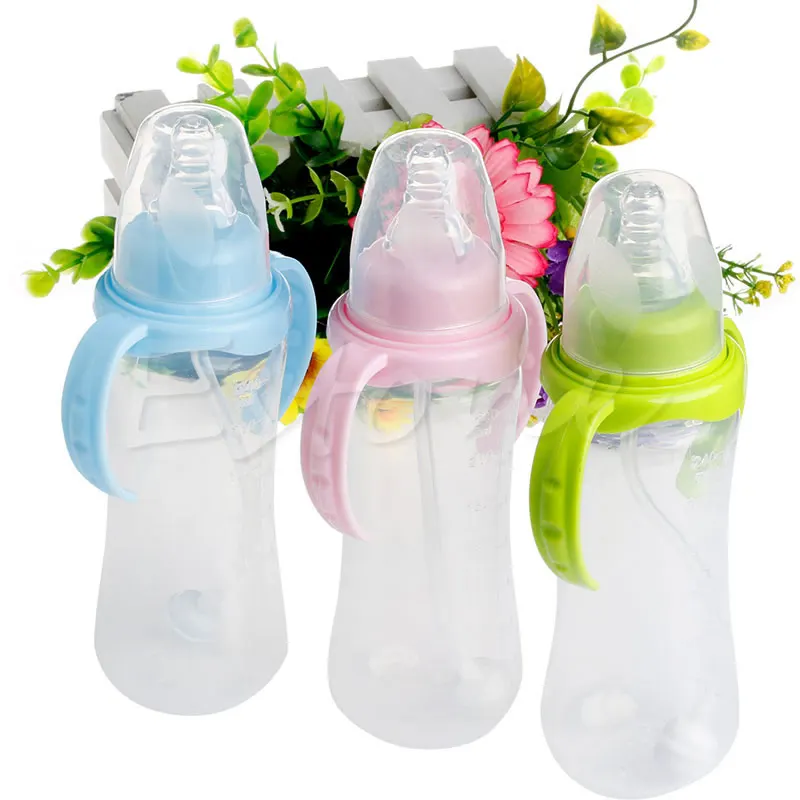 You are reproducing the behavior of the mother rabbit who would lick her young to stimulate them to go to the bathroom and to keep the nest clean. Again, ONLY if the eyes are still closed. Handle a wild rabbit only during feedings as excessive handling can be extremely stressful/potentially fatal. Wild rabbits don’t need heat if furred and healthy. Wild rabbits should not be fed at home, but get them to a professional rehabber as it IS CRITICAL for their survival and to be with their own kind. Most die from overfeeding and/or stress.
You are reproducing the behavior of the mother rabbit who would lick her young to stimulate them to go to the bathroom and to keep the nest clean. Again, ONLY if the eyes are still closed. Handle a wild rabbit only during feedings as excessive handling can be extremely stressful/potentially fatal. Wild rabbits don’t need heat if furred and healthy. Wild rabbits should not be fed at home, but get them to a professional rehabber as it IS CRITICAL for their survival and to be with their own kind. Most die from overfeeding and/or stress.
As soon as the wild bunnies’ eyes are open, you may introduce them to plain alfalfa pellets, hay, such as oat hay, timothy, alfalfa and veggies such as carrot tops, Italian parsley, dandelion greens. Dandelion greens and hay (timothy and oat hay) are extremely important for wild rabbits. You can add whole oats from a feed store, and some grated carrots. The greens must be fresh, rinsed, and replaced if not eaten in a few hours. You can place them in a cup of cold water with just the tops sticking out to keep them fresher. (For a domestic rabbit baby, see section under the Domestic heading). Wild cottontail and brush bunny rabbits should be released as soon as they are eating hay and greens and are approximately 5 inches in body length and run from you. This varies with the area, so size is not easy to say. They will be small, but the longer you keep them, the more agitated and difficult to handle they will become and the less likely their chances for survival in the wild. Release ONLY at dusk or dawn. Jackrabbits (hares) are not ready until 9+ weeks.Make sure they get exercise daily. Jackrabbits mature much slower than the brush/cottontails and need to develop strength. If they are ready, earlier, they will let you know.
(For a domestic rabbit baby, see section under the Domestic heading). Wild cottontail and brush bunny rabbits should be released as soon as they are eating hay and greens and are approximately 5 inches in body length and run from you. This varies with the area, so size is not easy to say. They will be small, but the longer you keep them, the more agitated and difficult to handle they will become and the less likely their chances for survival in the wild. Release ONLY at dusk or dawn. Jackrabbits (hares) are not ready until 9+ weeks.Make sure they get exercise daily. Jackrabbits mature much slower than the brush/cottontails and need to develop strength. If they are ready, earlier, they will let you know.
WARNING: Jackrabbits really NEED a skilled wildlife rehabber as they can run from you, throw themselves into walls to get away; many have died or severely injured themselves in captivity as they are so very wild. Please DO NOT raise them if you are not a skilled wildlife rehabber. This is vital. Noises and sounds easily frighten the jackrabbit and they are not able to be handled after 9 weeks. Often, sadly, we get reports of how a well-meaning person who tried to raise a wild rabbit, only to find it literally died of fright or got injured inside the cage. They are wild and belong with their own kind, out in the wild.
Jackrabbits really enjoy being raised together, whereas cottontails/brush bunnies may fight and do fine alone. Give them a carrier as their place of privacy (line with thick towels) with plenty of fresh hay and greens described above and water bowl. Again, wild rabbits need a skilled wildlife rehabber; it is critical to their survival.
The Bunny is DOMESTIC (i.e., pet rabbit, NOT wild) and Really Orphaned – How do I care for a domestic baby?
Baby Domestic Agouti Bunny Baby Domestic/Pet Agouti rabbit babyRemember that both the domestic pet rabbit and wild bunny moms only feed their young usually once in the middle of the night.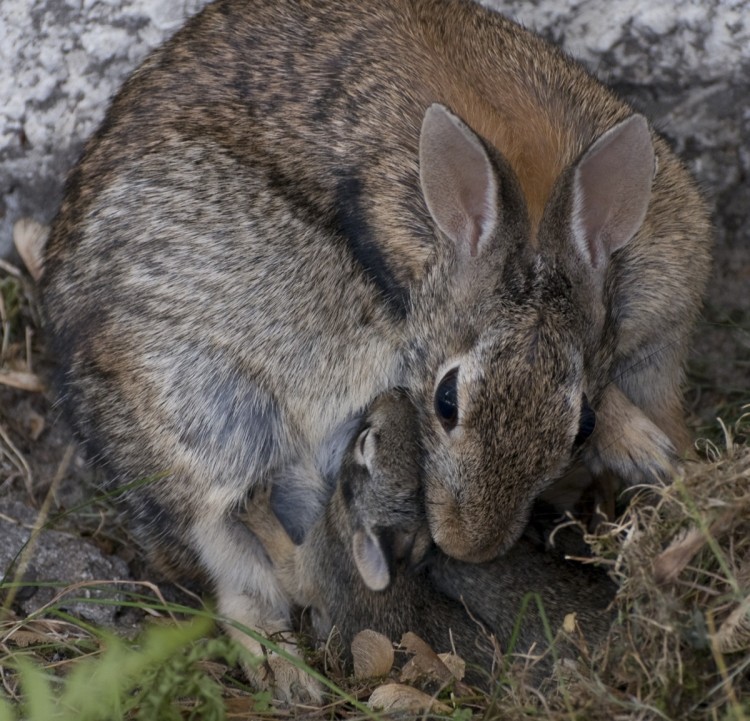 Don’t assume the mom is not caring for them if you don’t see her nurse them. Check their tummies to see if they are round and the babies are warm in the morning–this means she is caring for them. In the rare situation that you have an orphaned domestic bunny, such as when a domestic rabbit mom is sick or refuses to care for her young, you will need to feed the babies. Overfeeding is a leading cause of death in these youngsters which results in fatal intestinal disease.
Don’t assume the mom is not caring for them if you don’t see her nurse them. Check their tummies to see if they are round and the babies are warm in the morning–this means she is caring for them. In the rare situation that you have an orphaned domestic bunny, such as when a domestic rabbit mom is sick or refuses to care for her young, you will need to feed the babies. Overfeeding is a leading cause of death in these youngsters which results in fatal intestinal disease.
If truly orphaned, use KMR KITTEN powder formula (can also use Meyenberg Regular Goat milk found at Safeway in the milk section or Whole Foods until you can find the KMR KITTEN formula), and follow the directions on the can. It may be easiest to start with a 3 cc/ml syringe or an eyedropper. Some use pet nurser nipples on the end of a luer lock syringe, or a teat cannula on the end of a syringe. Feed only with the bunny sitting UPRIGHT, and point syringe down towards bottom or side of mouth, so if too much comes out, the baby does not aspirate! For those who are slow to learn nursing, SC fluids may be necessary to prevent electrolyte imbalance or dehydration (check with a vet on this only!!). Domestic buns with closed eyes should be fed 2 x a day, and the number of feedings gradually decreased until they are weaned. If their eyes are still closed, you need to stimulate their bottoms with a warm moist towel after feedings to help them to pee. (Domestics are weaned about 6 weeks compared to wild bunnies who are weaned about 3-4 weeks for cottontails and 9+ weeks for jackrabbits). Bloat is commonly associated with too frequent feedings and too much at one time.
Domestic buns with closed eyes should be fed 2 x a day, and the number of feedings gradually decreased until they are weaned. If their eyes are still closed, you need to stimulate their bottoms with a warm moist towel after feedings to help them to pee. (Domestics are weaned about 6 weeks compared to wild bunnies who are weaned about 3-4 weeks for cottontails and 9+ weeks for jackrabbits). Bloat is commonly associated with too frequent feedings and too much at one time.
Feeding Amounts for DOMESTIC/PET Orphaned babies*: Feed twice a day up to these amounts: Newborn– 2.5 cc/ml each feeding. One week old: 6-7 cc/ml each feeding. Two weeks old: 12-13 cc/ml each feeding. Three weeks to six weeks: Up to 15 cc/ml each feeding (a.m. and p.m.). Note this is for DOMESTIC, NOT WILD bunnies. Each bunny varies. If this is a smaller rabbit, he will consume much less. Do NOT overfeed! Contact an HRS contact, rabbit vet, to be sure.
*After each feeding it is important to make the bunny defecate and urinate (if the eyes are not opened yet) to keep the intestinal tract and urinary system running smoothly (only UNTIL their eyes are open).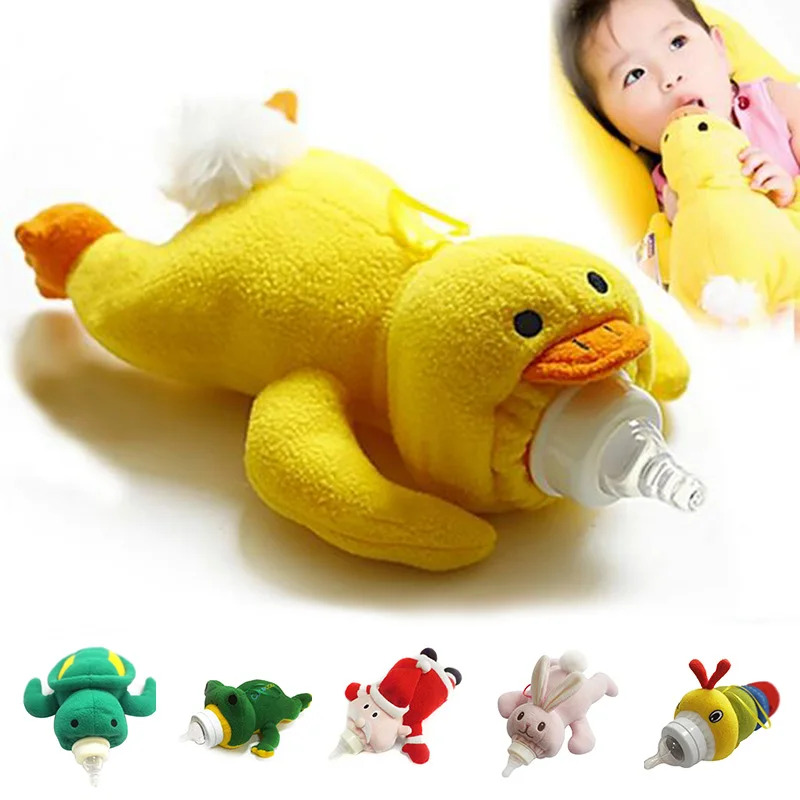 Use a cotton ball moistened with warm water and gently stroke the anal area until the bunny starts producing stool and urine and keep stroking until the bunny stops. You are reproducing the behavior of the mother rabbit who would lick her young to stimulate them to go to the bathroom and to keep the nest clean.
Use a cotton ball moistened with warm water and gently stroke the anal area until the bunny starts producing stool and urine and keep stroking until the bunny stops. You are reproducing the behavior of the mother rabbit who would lick her young to stimulate them to go to the bathroom and to keep the nest clean.
Provide a soft nest area in a box with clean towels, and cover the babies so it is dark until their eyes are open. Do NOT provide extra heat if the room temperature is at least 65 to 70 degrees F because excessive heat can be fatal. If the room is cooler, then you may place a heating pad on a low setting under no more than HALF of the nest so the bunny can move to a cooler area if it gets too warm, and be sure there is no way the mother rabbit can get to or chew the electrical cord!
For domestic rabbits, if you have a healthy adult rabbit at home and you can collect cecotropes (the soft, chain-like droppings that the rabbit usually eats) then these can be mixed with the KMR to give the baby bunny normal bacteria for its intestinal tract. Only one cecotrope per day for 4-5 days is needed. This is particularly important for rabbits under one week of age. Also good is to sprinkle a pinch of acidophilus powder, also called “Probiotic” from human capsules in the milk a little each time for healthy flora for both wild and domestic bunnies.
Only one cecotrope per day for 4-5 days is needed. This is particularly important for rabbits under one week of age. Also good is to sprinkle a pinch of acidophilus powder, also called “Probiotic” from human capsules in the milk a little each time for healthy flora for both wild and domestic bunnies.
As soon as their eyes are open, you may introduce the bunnies to plain alfalfa pellets, hay, such as oat hay, timothy, alfalfa. Please refer to the handout Care of Rabbits for more information on diet for domestic, pet rabbits. You may reach [email protected] for domestic/pet rabbit questions. Below is the email for wild rabbit questions: [email protected] (wild) (If links above did not answer your question).
(See above for wild rabbits). For all rabbits, avoid ANY regular milk, puppy formulas, etc. Use KITTEN formulas like KMR. Avoid Esbilac. Feed only upright. Less is better than more! Overfeeding will cause bloat and pain and possible death. Please get to a rehabber.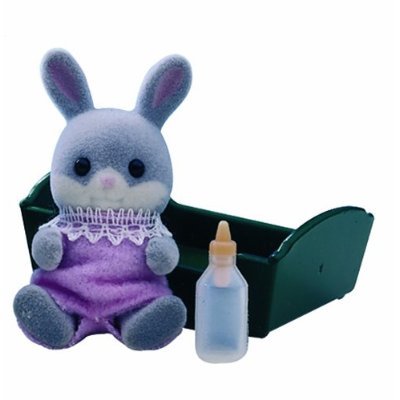
Sources: Caring for Cricket – What Not To Do When You Find a Wild Baby Bunny by Julie Smith and Handout by Midwest Exotic Animal Hospital, and additional wild bunny info by M. Wilson (HRS educator and rehabber). For questions not answered about wild rabbits above, email: wildbunnyrehab at gmail.com
Below content was merged from: /caring-for-orphans/
Rabbit mothers nurse their babies for approximately 5 minutes a day. They will be in the nest or nest box early in the morning and then again in the evening. The milk is very rich and the babies “fill up” to capacity within minutes. Mother rabbits do not “sit” on the babies to keep them warm as do some mammals and birds. They build a nest with fur and grasses which helps to keep the babies warm in between feedings. Do not force a mother rabbit to sit in the nest box. You can pick up the babies and see if they are feeding by checking the size of their stomachs (should not be sunken in), the pinkness of their skin and activity level (they should not be blue in color or sluggish in movement) and the amount of time that you hear them crying (baby bunnies should be quiet most of the day…. if they are crying constantly then they are not getting fed). If they are warm, mom is most likely feeding them, but again, she only comes back in the middle of the night.
if they are crying constantly then they are not getting fed). If they are warm, mom is most likely feeding them, but again, she only comes back in the middle of the night.
If you come across a nest of bunnies in the wild and the mother is no where to be seen, please DO NOT disturb them…this is normal. By removing them from the nest you are greatly reducing their chances of survival.In the rare situation that you have an orphaned bunny, such as when a mother rabbit is killed by another animal or in the road, or when a domestic rabbit refuses to care for her young, you may try feeding with Kitten Milk Replacer (KMR) or Meyenberg Goat Milk (for wild rabbits, but they need a professional reahabber–do not feed at home). Remember though, that both wild/domestic bunny moms only feed in the middle of the night, so don’t assume she is not caring for them! For true orphans, remember to feed ONLY TWICE A DAY. Overfeeding is a leading cause of death in these youngsters which results in fatal intestinal disease. Provide a soft nest area in a box with clean towels, and cover the babies (if eyes are closed) so it is dark.
Provide a soft nest area in a box with clean towels, and cover the babies (if eyes are closed) so it is dark.
DO NOT provide extra heat if the room temperature is at least 65 to 70F because excessive heat can be fatal. If the room is much cooler, then you may place a heating pad on a low setting under no more than HALF of the nest so the bunny can move to a cooler area if it gets too warm.
For a wild bunny, you need to get him to a wildlife rehabilitator if he is TRULY orphaned (mom was killed). Remember with wild bunnies, the mom ONLY comes back at night to call and feed him; please put him back for her if just found and healthy. With domestics, the mom only feeds once or twice a day for only 5 minutes. Leave babies with the mom. For wild orphans, first google your state and wildlife rehabber, and call your humane society, also try http://www.humanesociety.org/animals/resources/tips/find-a-wildlife-rehabilitator.html and http://www.owra.org/find-a-wildlife-rehabilitatoror as it is illegal in most states to keep a wild animal, and they really need a professional as this is critical.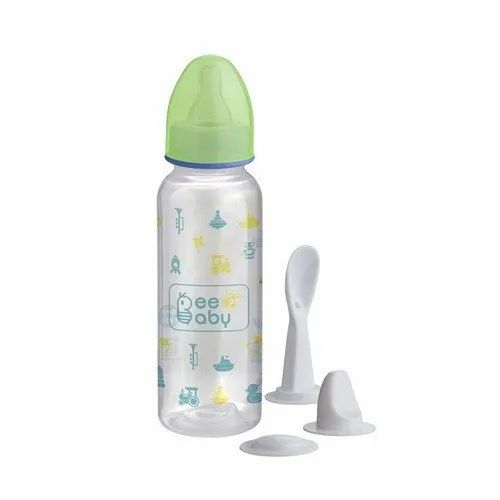 Local rabbit veterinarians or humane societies may also know of a rehab facility.
Local rabbit veterinarians or humane societies may also know of a rehab facility.
The following is a guideline for the daily amount to feed a TRULY orphaned bunny (mother was killed, etc.) that will be about 5 lbs as an adult. It is impossible on the internet to be exact. Please find rehabber.
GENERAL FEEDING OF ORPHANS
Age + Amount (This WILL vary depending on type of rabbit.) Use KMR (Kitten Milk Replacer) for domestics and Meyenberg Goat Milk, regular not low fat for wild ones,or KMR. Add a pinch of acidophilus (AKA Probiotic capsules) to all formula to promote healthy gut flora. Other formulas vary depending on the region of the country. Avoid using Esbilac or any puppy formulas or cow’s milk. Do not add Karo syrup. FEED TWICE A DAY ONLY unless baby is low weight, than three times.
Newborn to One Week: 2 – 2+1/2 cc/ml each feeding (two feedings).
1-2 weeks: 5-7 cc/ml each feeding (two feedings).
(depending on bunny.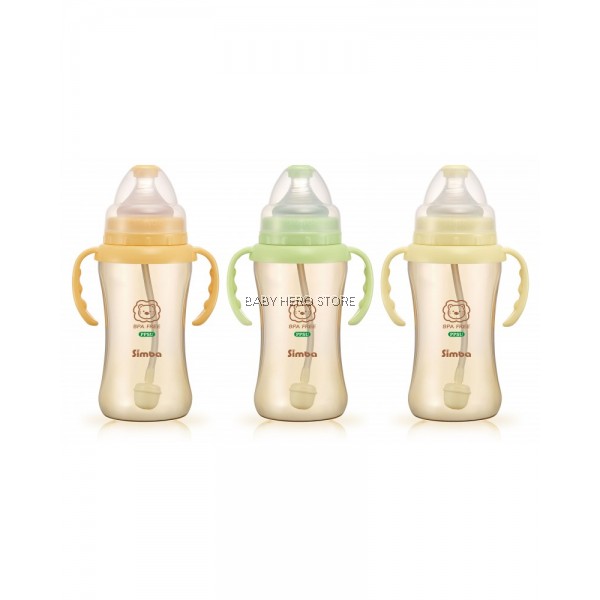 .may be much LESS if smaller rabbit).
.may be much LESS if smaller rabbit).
2-3 weeks: 7-13 cc/ml each feeding (two feedings). Bunnies whose eyes are still CLOSED need to be stimulated to urinate and defecate before or after each feeding. Again, seek a professional on this. Domestic eyes open at about 10 days of age. Then start introducing them to timothy and oat hay, pellets and water (always add fresh greens for wild ones–dandelion greens, parsley, carrot tops, grated carrots, all fresh, watered down). See below for detail.
3-6 weeks: 13-15 cc/ml each feeding (two feedings–again, may be LESS depending on size of rabbit! A cottontail will take so much LESS–about half of this!.)
Domestics are weaned about 6 weeks. Cottontails wean and release about 3-4 weeks and jackrabbits much later (9+ weeks). Feed only twice a day up to these TOTAL amounts. You may find an eyedropper or syringe easiest to use. Feed them upright, and go slowly watching them lick and swallow so they do not aspirate.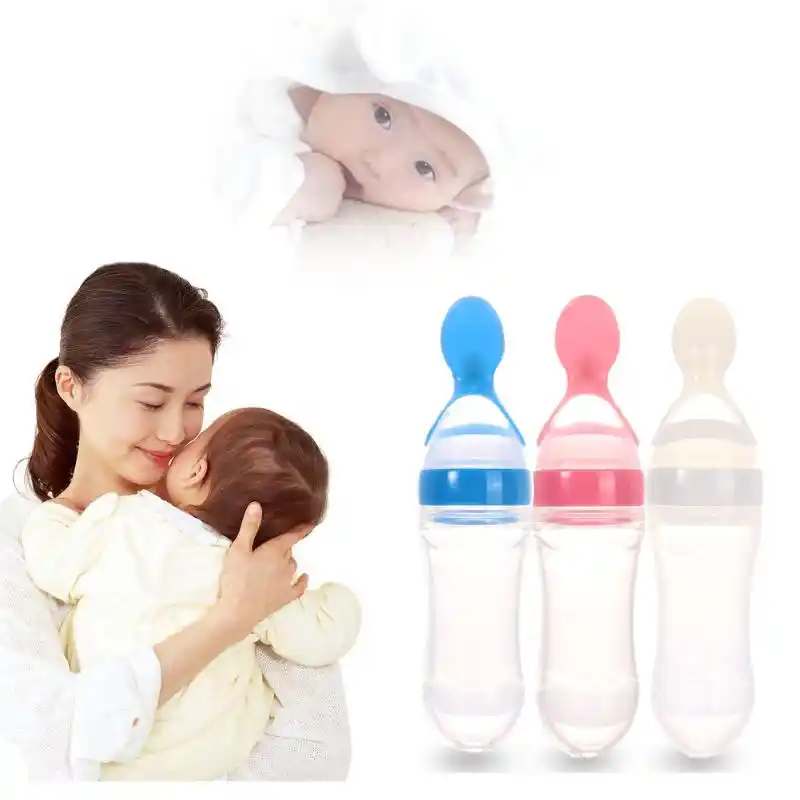 For domestic rabbits, if you have a healthy adult rabbit at home and you can collect cecotropes (the soft chain-like droppings that the rabbit usually eats) then these can be mixed with the KMR or goat milk to give the baby bunny normal bacteria for its intestinal tract. Only one cecotrope per day for 4-5 days is needed. This is particularly important for rabbits under one week of age. Acidophilus capsules for humans, opened and sprinkled some in formula, works well too.
For domestic rabbits, if you have a healthy adult rabbit at home and you can collect cecotropes (the soft chain-like droppings that the rabbit usually eats) then these can be mixed with the KMR or goat milk to give the baby bunny normal bacteria for its intestinal tract. Only one cecotrope per day for 4-5 days is needed. This is particularly important for rabbits under one week of age. Acidophilus capsules for humans, opened and sprinkled some in formula, works well too.
After each feeding it is important to make the bunny defecate and urinate (until their eyes are open) to keep the intestinal tract and urinary system running smoothly. Use a cotton ball moistened with warm water and gently stroke the anal area until the bunny starts producing stool and urine and keep stroking until the bunny stops. You are reproducing the behavior of the mother rabbit who would lick her young to stimulate them to go to the bathroom and to keep the nest clean. No need to do this for jackrabbits or if bunny’s eyes are open.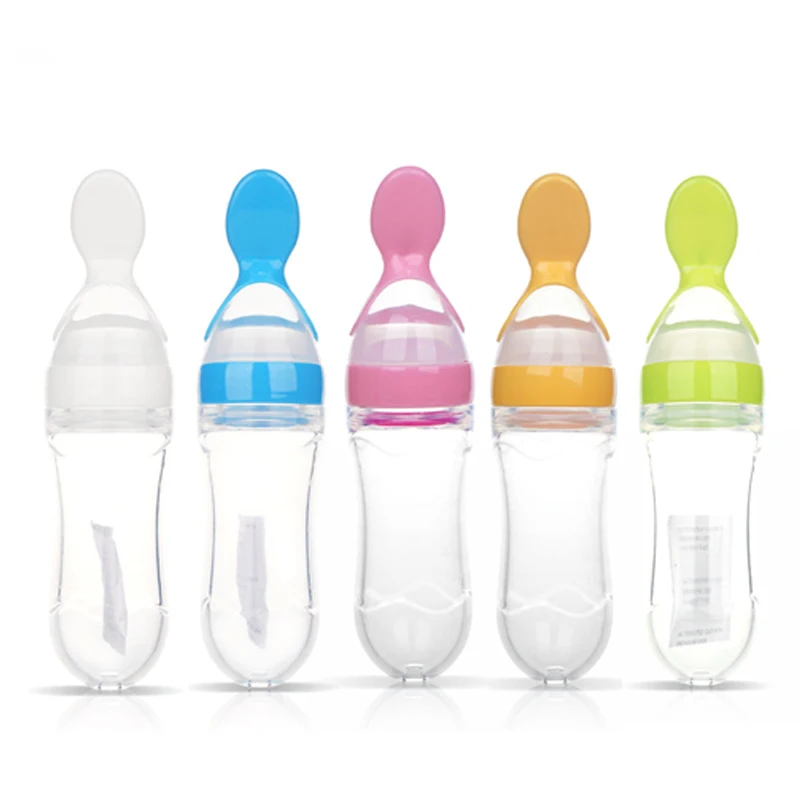
As soon as their eyes are open, you may introduce the bunnies to hay, such as oat and timothy hay, some alfalfa, and pellets, and for wild ones, add dark leafy veggies such as dandelion greens, carrot tops, parsley, grated carrots, etc. Keep the greens fresh, moist, and stand them up in a heavy mug of water. Change greens often. If this is a wild rabbit, you do not need to introduce pellets. If this is a domestic rabbit baby, then you may introduce plain alfalfa pellets at 2 weeks of age (please refer to the handout Care of Rabbits for more information on diet). Wild rabbits should be released as soon as they are eating hay and greens and are approximately 5 inches in body length (for cottontails) and are afraid of you (about 3-4 weeks). Jackrabbits are released much later (9 weeks up). They will be small, but the longer you keep them, the more agitated and difficult to handle they will become, and the less likely their chances for survival in the wild. They may be easily injured in your care as they attempt to get free.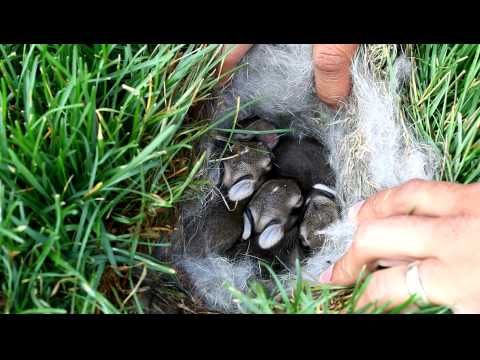 For wild bunnies, please do not raise them yourself, but take them to a rehabber! Google your state and wildlife rehabber or see links above.
For wild bunnies, please do not raise them yourself, but take them to a rehabber! Google your state and wildlife rehabber or see links above.
Modified from an original document from :
Midwest Bird & Exotic Animal Hospital
How to feed rabbits without a rabbit
Contents:
- 1 How to feed rabbits without a rabbit.
- 1.1 Artificial rearing of rabbits.
- 1.1.1 Artificial feeding rabbits No. 1
- 1.1.2 Artificial feeding rabbits No. 2
- 1.2 Walkthrough description: How to feed the rabbits artificially
- 1.3 How to make a milk substitute for rabbits 9000 1.4 How often should be fed small rabbits -orphans?
- 1.1 Artificial rearing of rabbits.
- 1.5 How to bottle feed orphans
It happens that the rabbit dies after giving birth and the rabbits are left without a rabbit. And then the question arises of how to feed the rabbits without a rabbit.
Of course, the best option is to put it with another lactating rabbit (if the difference in the age of the rabbits is no more than 1-2 days).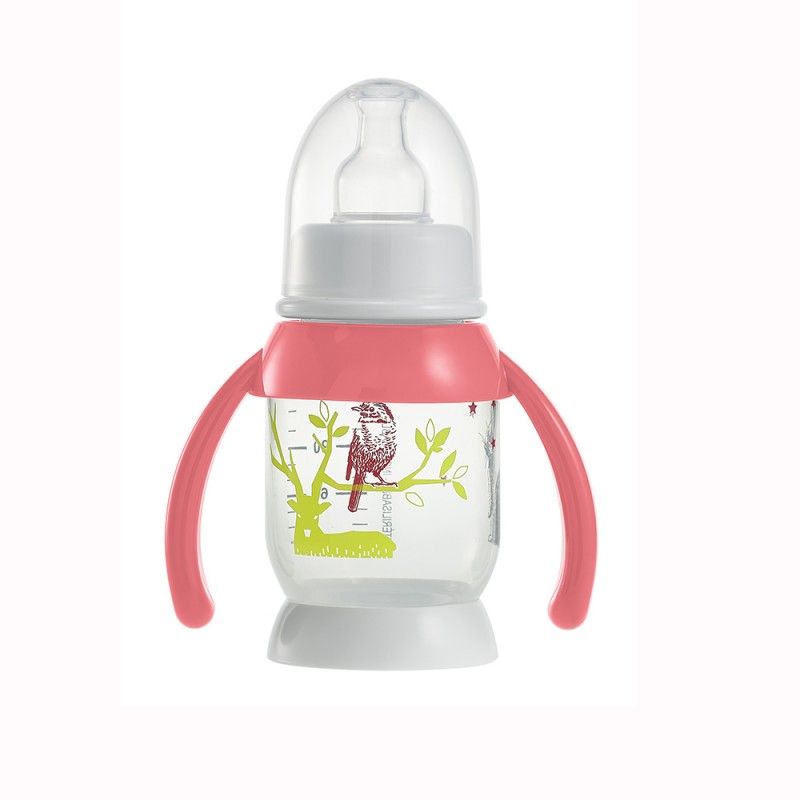 If this is not possible, you can look for nursing rabbits in other nurseries, farms, household plots (by calling them).
If this is not possible, you can look for nursing rabbits in other nurseries, farms, household plots (by calling them).
If this is not possible, the only option left is to try to feed the rabbits artificially. It is more difficult to feed decorative rabbits than meat ones, there is very little chance. Meat rabbits are more likely to feed than decorative ones.
The first thing to outline (if the female has not made a nest) is to make a nest yourself so that the rabbits are warm. You can just put them in a box (not big) so that they are in a pile, so they keep warm, basking from each other. In a box, any woolen thing under them and on top of them.
Baby rabbits can not eat for a day, this is normal, often the female starts feeding them the next day after giving birth. Therefore, you have a day to prepare and buy everything for artificial feeding. It is better not to delay feeding for more than a day, as the rabbits can become very weak and they simply do not have enough strength to eat.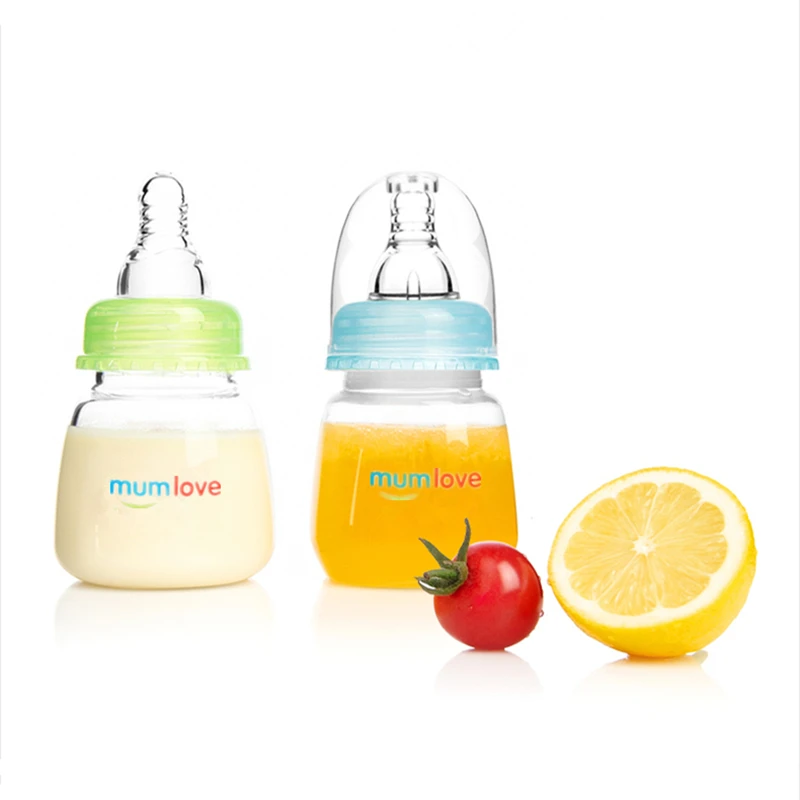
Baby rabbits should be fed artificially, 2-3 times a day, at the same time. Before and after feeding, it is necessary to massage the tummy and genitals, so the female licks the rabbits, stimulating them to go to the toilet.
Below are a few ways of artificial rearing of rabbits, which have been tried by breeders and just owners of rabbits, both meat and decorative. It is easier to artificially feed a puppy or kitten than a rabbit. For rabbits, a milk replacer has not yet been invented as for cats and dogs.
Artificial rearing of rabbits.
Artificial feeding is worth resorting to:
- 1. When the lactating female (mother of rabbits) died
- 2. When the female does not have milk (this happens rarely), and even in this case, do not take the babies from the mother ...
Rabbit's milk in its chemical composition is significantly different from the milk of other farm animals. It contains a very high amount of fats and proteins and it is difficult to find an adequate replacement for it.
According to the content of solids, calories, proteins, fats and minerals, rabbit milk is in the first place, this also explains the rapid growth of newborn rabbits, since a large amount of nutrients are supplied to them through milk.
For example, rabbit milk contains four times more proteins than cow's milk, and more than three times more minerals, as a result of which the weight of newborn rabbits doubles on the sixth day, and on the thirtieth they are ten times heavier than at birth .
Artificial rearing of rabbits No. 1
In terms of composition, dog milk is closest to rabbit milk. Pet stores sell powdered dog milk.
The artificial feeding temperature should be approximately equal to the rabbit's body temperature of 37-39°C. It is necessary to cook small portions of food - a maximum of a day. The mixture not used for feeding is stored in the refrigerator, warming up before use.
A pipette can be used as a teat.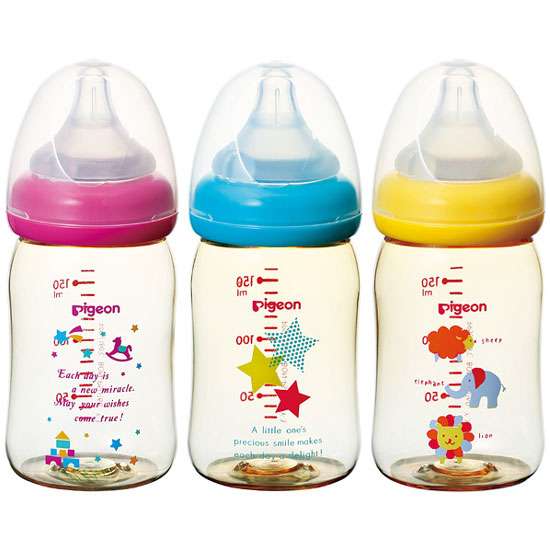 You need to feed in small portions. When feeding, it is necessary to keep the rabbit upright.
You need to feed in small portions. When feeding, it is necessary to keep the rabbit upright.
Baby rabbits should be artificially fed for 3-4 weeks. With improper feeding of rabbits, an upset stomach occurs, there may be pneumonia, and in extreme cases, the death of rabbits may occur.
Artificial rearing of rabbits #2
Natural goat's milk, closest in composition to rabbit's, but lower in fat content. If you don't sell milk replacer for dogs or cats, goat's milk can be used naturally. It also needs to be warmed up before eating. Everything should be sterile, wash your hands before feeding.
For very young rabbits, a syringe without a needle is best. In veterinary pharmacies, you can purchase special kits for newborn pets, which include syringes with a set of feeding nozzles. For larger rabbits, a regular pipette will do, then a regular nipple, and finally rabbits at a month old drink perfectly from a bowl.
Decorative rabbits need 1-2 ml per day. the first 3-4 days, then 2-3 ml.
Meat rabbits 3-5 ml. gradually increasing.
Starting from 12-14 days, hay should be introduced slowly (except for milk) and compound feed after 3 days.
Step-by-step: how to artificially feed baby rabbits
Feeding rabbits requires special care and attention so as not to overload their sensitive immune and digestive systems. Follow these steps until the letter:
- Wash hands thoroughly with warm soapy water.
- Follow the instructions provided for sterilizing and disinfecting bottles and teats.
- Fill bottle with formula, then warm to body temperature.
- Sit on the floor and spread enough pillows under the area where you will feed the rabbits.
- Hold your baby horizontally in your hand and gently bring the bottle nipple to his lips.
- Baby rabbit sometimes resists bottle feeding; in this case, moisten your lips with a drop of the mixture and be persistent.
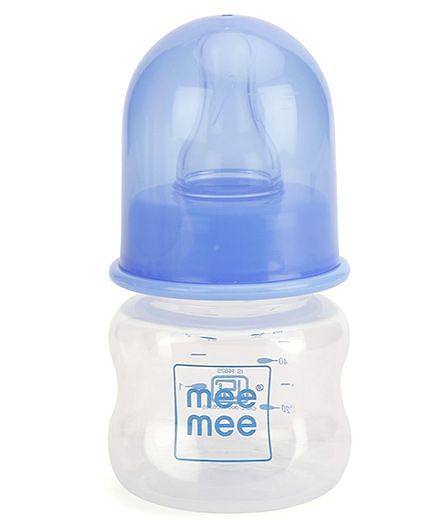
- DO NOT try to squeeze the mixture out of the bottle! The last thing you need to do is to overfill the rabbit's mouth, causing it to breathe in the mixture.
That's it! Over time, the kids will get used to your feeding and stop fussing. For the first three weeks of their lives, they will rely solely on formula for nutrition.
From 3 to 6 weeks you will notice that they start to try solid foods. This will form the basis for weaning them from the bottle, but they will still need the nutrients in the formula until around 8 weeks of age - after which you can safely stop feeding them.
How to make milk replacer for rabbits
If you are going to care for a small rabbit, you need to use a special milk replacer for kittens. If this is not possible, you can make this meal replacement at home. To create a homemade rabbit milk replacer, follow this recipe:
- Pour one cup of goat's milk and add another 56 grams of goat's milk powder.

- Add a tablespoon of unsweetened heavy cream. This will make the mixture richer and mimic the calorie content of rabbit milk.
- Heat mixture to 98-100 degrees Fahrenheit.
These ingredients will satisfy the needs of a young rabbit by replacing mother's milk like its counterpart. However, when in doubt, buy a pre-blended milk replacer.
How often should little orphan rabbits be fed?
The quantity is as important as the quality of the milk. Overfeeding or underfeeding a rabbit is equally dangerous. As a general rule, follow these guidelines when feeding your rabbit. You may have to guess the age if the rabbit was wild.
| Less than 1 week | 2 or 2.5 cu. cc/ml per feeding twice a day |
| 1-2 weeks | 5 to 7 cu. cm/ml per feeding twice a day. |
| 2-3 weeks | 7 to 13 cu. cm/ml per feeding twice a day.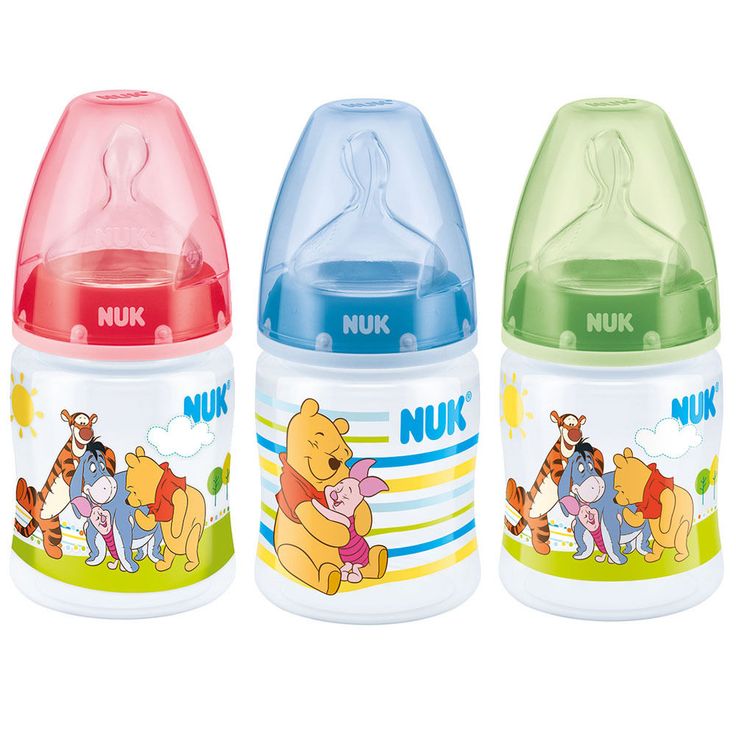 |
| 3-6 weeks | 13 to 15 cm3 / ml per feeding twice a day. |
If you follow these guidelines, your rabbit will grow. The maximum time required for breastfeeding is six weeks. However, you may find that your rabbit wants to wean earlier. Encourage it if so.
Rabbits start eating solid food after a week or two. The sooner the rabbit starts eating hay in exchange for fiber, the better. Remember, a rabbit can't eat too much hay. What can not be said about milk mixtures.
How to bottle feed orphans
Visit your veterinarian or pet store and ask for a special pet bottle. It must be completely sterile before use.
- Make your rabbit comfortable and wrap him in a towel if possible. Do not let the rabbit roll onto its back. She should sit upright so as not to fill her lungs with fluid.
- Fill bottle with mixture and soothe the rabbit. Place the nipple of the bottle in the corner of her mouth.
 Remove it if she starts to chew. It may take several attempts for the rabbit to get used to the syringe in its mouth.
Remove it if she starts to chew. It may take several attempts for the rabbit to get used to the syringe in its mouth. - Once the rabbit accepts the bottle, SLOWLY release the milk replacer to the amount indicated above. Never release the entire amount at once. This puts the rabbit at risk of choking.
- Repeat this twice a day until the rabbit is weaned.
Under no circumstances should rabbits be fed cow's milk. Rabbits cannot digest cow's milk and are unlikely to live long after eating. If you are caring for a rabbit, use a kitten milk replacer. A rabbit will feel full on solid food at eight weeks of age.
How to feed baby rabbits without a female rabbit from the first days of life
From time to time, farmers have to face the problem of how to feed baby rabbits without a female rabbit. The reasons for the need may be different, but the solution is always equally necessary. In this position, the efficiency and fidelity of actions directly affect the survival of babies. Any mistake can lead to the death of the offspring in just a few hours.
In this position, the efficiency and fidelity of actions directly affect the survival of babies. Any mistake can lead to the death of the offspring in just a few hours.
How to feed baby rabbits without a female rabbit
Contents of the article
- 1 Is it possible to feed baby rabbits without a female rabbit?
- 2 What can replace rabbit milk?
- 3 Rules for feeding
- 4 Artificial feeding rabbits by age
- 4.1 from birth to 5 days
- 4.2 from 6 to 14 days
- 4.3 Video - how to feed a rabbit through a syringe
- 4.4 from 15 to 30 days
- 5 What to feed baby rabbits per month?
- 5.1 Fummers for rabbits
- 6 top dressing
- 7 DPRESS and disadvantages of young feeding young animals
- 8 Care for rabbits with artificial feeding
- 8.1 prices for rabbits
is possible rabbits?
It is possible to feed offspring of rabbits without a female, although the process will require a waste of time and money. The organization of such a meal obliges you to purchase some accessories, follow schedules, be with the kids a lot. The main difficulties occur in the first weeks of the life of rabbits. As they grow older, the need for constant support disappears, the animals become independent.
The organization of such a meal obliges you to purchase some accessories, follow schedules, be with the kids a lot. The main difficulties occur in the first weeks of the life of rabbits. As they grow older, the need for constant support disappears, the animals become independent.
Babies with a rabbit
Artificial feeding is considered undesirable unless absolutely necessary. Wrong actions can reduce the percentage of survival. Third-party nutrition, human care will not completely replace mother's milk and care. Meanwhile, there are cases when orphaned babies grew up stronger, thanks to the hard work of breeders.
Newborn rabbit
Procedure required for certain problems:
- female death . Sometimes the rabbit dies during or after childbirth. It is very difficult to predict the sad outcome;
- atrophied parental instinct . Often occurs in the first litter in young individuals. The newly-made mother does not want to feed her offspring.
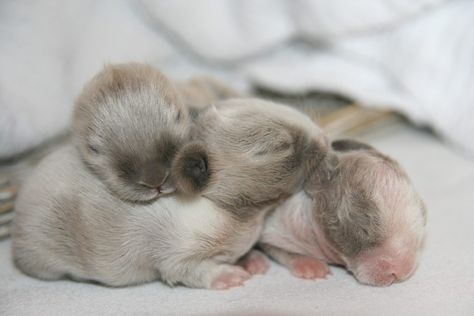 In most cases, the instinct can be awakened forcibly by holding the female several times in the process of feeding the babies. However, there are times when no tricks help;
In most cases, the instinct can be awakened forcibly by holding the female several times in the process of feeding the babies. However, there are times when no tricks help; - passion for hunting . Restless rabbits can abandon children within a day after giving birth. They begin to run around the living space, furiously looking for food. In such impulses, rabbits often die from accidental trampling by their own mother. The problem is solved by provocation. Mating is carried out with a male incapable of conception. After that, the female can calm down. If the attempt is unsuccessful, artificial feeding cannot be avoided;
- sore nipples . It is also more common in young rabbits. Roughened skin does not allow milk to pass quietly, the process causes severe inconvenience to the mother and she stops letting offspring;
- strong odors . Rabbits are sensitive to foreign odors. The most unpleasant for them are shades of alcohol, perfume, household and technical liquids.
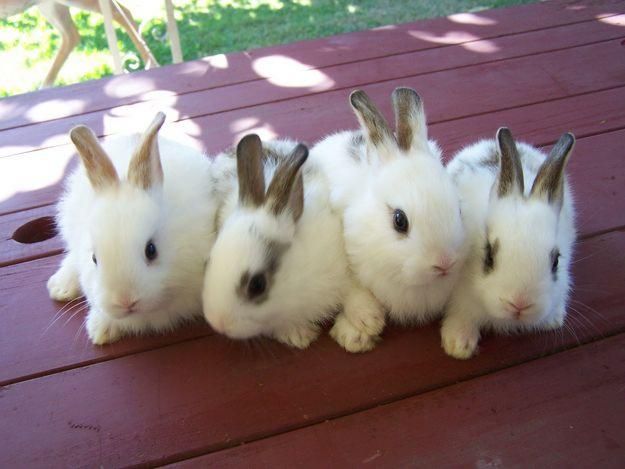 Sometimes the smells of other animals living in the neighborhood play a cruel joke. Discomfort leads to the damping of instincts.
Sometimes the smells of other animals living in the neighborhood play a cruel joke. Discomfort leads to the damping of instincts.
Feeding of young rabbits by another mother
In these situations, if possible, try placing the babies on another mother. However, not every rabbit will willingly accept someone else's offspring. In addition, a large number of babies will lead to exhaustion of the female. Therefore, experienced farmers prefer to immediately get down to business on their own.
See also: The rabbit does not feed the rabbits: what to do?
It happens that the rabbit refuses to feed newborns. Everyone who breeds rabbits should know what to do in such a situation. Why the rabbit does not feed the rabbits and how to deal with the problem, we will tell in the article.
What can I substitute for rabbit milk?
Newborn rabbits are recommended to be fed with quality substitutes. This is the only way they can get the maximum amount of nutrients. Valid options are:
This is the only way they can get the maximum amount of nutrients. Valid options are:
As for cow's milk, opinions differ. Some farmers consider it categorically unacceptable for rabbits. Other breeders claim that such a substitution is possible when there are no other options. Cow's milk differs significantly from rabbit's in composition, fat content, and ability to be digested. In its pure form, it does not satisfy the needs of small rabbits. Some sources suggest mixing whole cow's milk with condensed milk (preferably without sugar) 4 to 1. But this mix is classified as emergency.
Cow's milk can be used when there are no other options
Rules for feeding
Rabbits are born blind, without hair on the body, weighing about 60 g. Without the ability to see and move freely, nutritional skills are absent. Babies are completely defenseless, so the loss of a nursing mother is a very dangerous phenomenon for them. A person must perform the functions of a rabbit.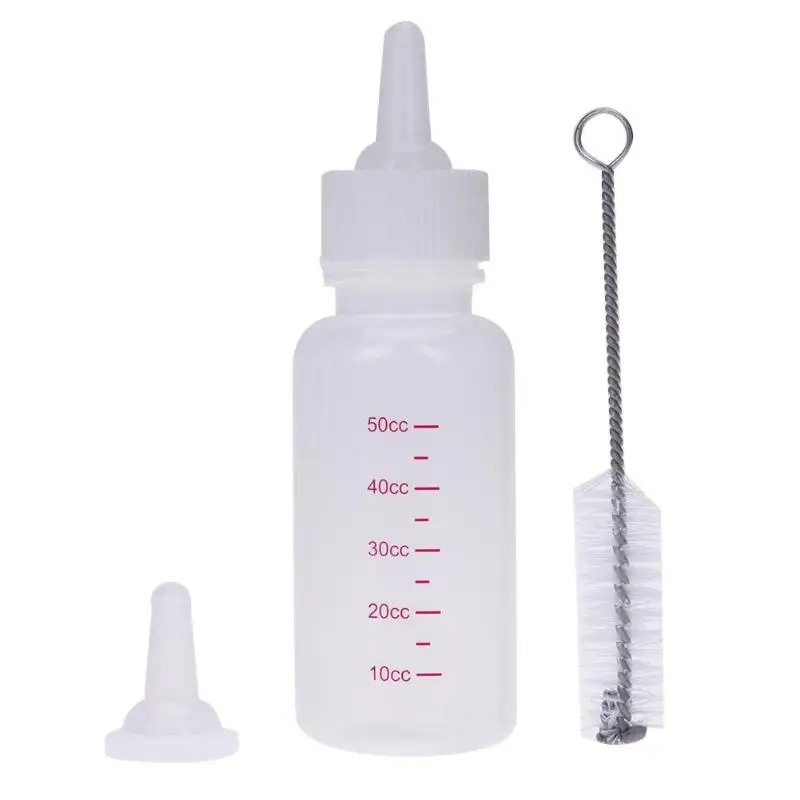 You will need to master certain skills, acquire inventory.
You will need to master certain skills, acquire inventory.
Newborn rabbits
In the first days of life, babies need a nipple. It can be played by:
- large pipette;
- 20 ml syringe without needle;
- clean bottle of eye drops;
- small size baby bottle;
- special kit for animal feeding.
Feeding set 1
Syringe and drop bottle are crafted to make feeding easier. The rubber cap from the pipette is put on the spout of the selected container. Previously, several punctures are made in the rubber. In store kits there is a special syringe and tips of different sizes. As the rabbits grow, the devices can be changed, moving from a pipette to a bottle. From day 20, most babies begin to eat from a saucer on their own.
Feeding set 2
Feeding should be built as close to natural flow as possible. The more accurately the details are copied, the faster the animals will acquire instincts. Until the eyes open, newborns show little reaction to the artificial nipple. Milk has to be poured into the mouth. It is important to squeeze out the liquid gradually so that the baby does not choke. The first 2-3 days it is better to start feeding by smearing milk around the mouth. The rabbit will lick it himself. For inactive individuals, the procedure is repeated several times. If the rabbit perks up when he feels the taste of food, you can already proceed to the infusion of a few drops.
Milk has to be poured into the mouth. It is important to squeeze out the liquid gradually so that the baby does not choke. The first 2-3 days it is better to start feeding by smearing milk around the mouth. The rabbit will lick it himself. For inactive individuals, the procedure is repeated several times. If the rabbit perks up when he feels the taste of food, you can already proceed to the infusion of a few drops.
Feeding should be built as close as possible to the natural flow
A blind baby can eat no more than 1 ml of milk at a time. The stomach should not be full. Overfeeding threatens with gastric disorders, inflammation of the respiratory system. The rabbit must be held vertically in the hand, without squeezing the body. The liquid is stored in the refrigerator for no more than 72 hours, heated before the procedure to 37-38°C. The mixture is always prepared fresh.
Keep baby upright
The easiest way to determine the optimal feeding times is to observe the behavior of the young.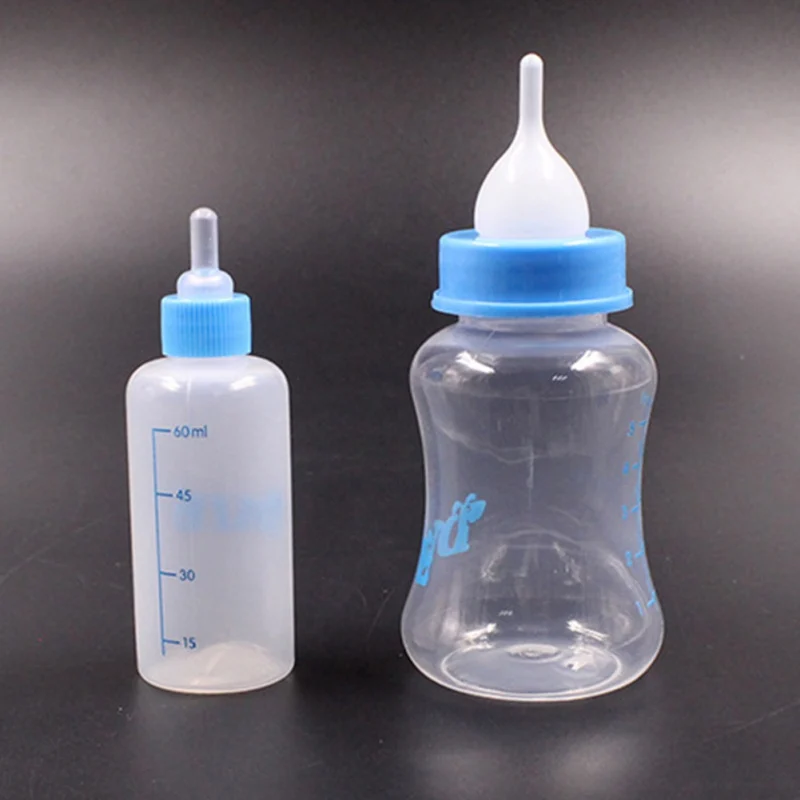 Well-fed cubs behave calmly, quietly, sleep a lot. In a hungry state, they become restless, try to move around in search of a mother and squeak.
Well-fed cubs behave calmly, quietly, sleep a lot. In a hungry state, they become restless, try to move around in search of a mother and squeak.
Artificial feeding of rabbits according to age
Each age of rabbits requires its own feeding schedule. The frequency is adjusted according to the speed of digestion of food. Appetite increases with the growing body. By the end of the first week, babies are already able to overeat, so following the rules is necessary for their health. Until the 30th day, the diet consists only of milk.
Up to a month, only milk is included in the diet
From birth to 5 days
A newly born rabbit is given literally 1 drop of liquid. During the day, the number of drops is increased gradually in 5-6 visits. The animal does not yet have a good swallowing reflex, so special care is needed. From the second day it is enough to feed 4-5 times. By the end of the period, the baby should double its birth weight (120-180 g for different breeds). On the fifth day, food is given 4 times.
On the fifth day, food is given 4 times.
Pipetting
From 6th to 14th days
From the 6th day the young rabbits are fed three times a day. This mode lasts up to 2 weeks of life. During this time, the weight of the babies reaches 200-260 g. Portions gradually grow along with the animals.
Syringe nipple
Video - How to feed a rabbit through a syringe
From 15 to 30 days
Days 15 and 16, individuals are transferred to a two-time diet. They observe their behavior, if there is not enough food, add a little mixture in the form of a third feeding. From the 17th day onwards, portions become impressive, the body prepares for the adult regimen, so two feedings do not exceed. By day 30, the rabbits weigh about 500 g. Depending on the breed, the weight may be slightly less or more. Weaning from the nipple begins by the end of the third week. Early maturing species are often ready for the introduction of other products already on the 20-25th day. Readiness can be tracked by the behavior and condition of the teeth. When milk teeth are almost completely replaced by molars, interest in solid food wakes up, the animal is transferred to a new food.
Depending on the breed, the weight may be slightly less or more. Weaning from the nipple begins by the end of the third week. Early maturing species are often ready for the introduction of other products already on the 20-25th day. Readiness can be tracked by the behavior and condition of the teeth. When milk teeth are almost completely replaced by molars, interest in solid food wakes up, the animal is transferred to a new food.
Baby bunny drinking milk from a bottle
Increase the amount of milk as it grows. The larger the breed, the larger the single serving.
| Feeding rate per 1 individual per day (for 1 feeding) | |
|---|---|
| 1-7 days | 5 ml (1 ml) |
| 8-14 days | 20 ml (5 ml) |
| 15-20 days | 20-26 ml (10-13 ml) |
| 21-30 days | 30-50 ml (15-25 ml) |
What to feed baby rabbits per month?
When the rabbits gain strength, the teeth will get stronger, they begin to connect solid food.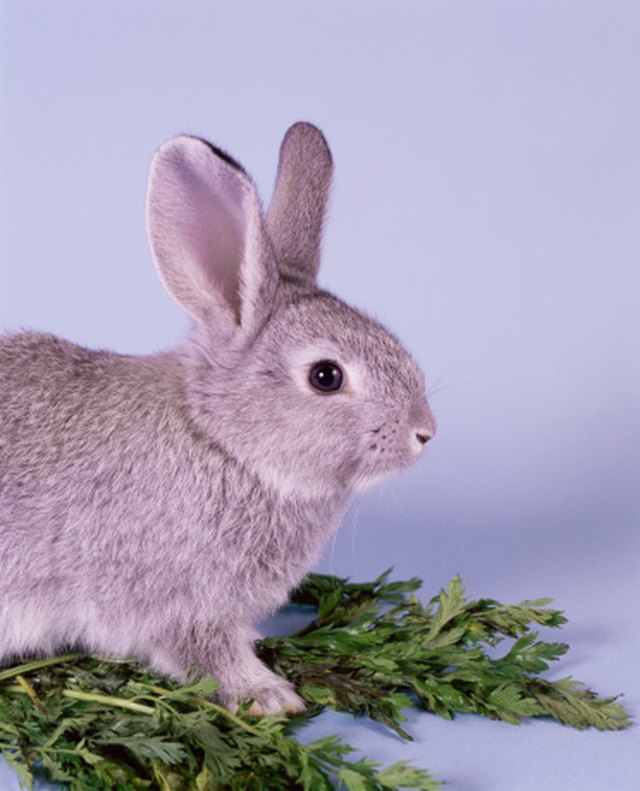 Some farmers completely exclude milk by 31 days. Others prefer to keep it as a supplement in small amounts. Experts recommend leaving dairy food only with weight loss.
Some farmers completely exclude milk by 31 days. Others prefer to keep it as a supplement in small amounts. Experts recommend leaving dairy food only with weight loss.
Hay is added to the diet
New food is offered to rabbits from 3 weeks of age. Even during the period of milk nutrition, small heaps of hay are placed on them. It is important to observe the baby's stool. The slightest signs of diarrhea serve as a stop signal for feeding. Disorders of the gastrointestinal tract for these animals are very dangerous, since digestion after them may not recover. If the introduction was successful, gradually add small grass, a few granules of compound feed, a pinch of grated carrots. So the transition to adult food is as smooth as possible.
Feed prices for rabbits
Feed for rabbits
The intestines of a monthly rabbit are able to digest food without stagnation. The basis of the diet is now made up of granular mixtures, greens and hay, oatmeal flakes, vegetables, root crops.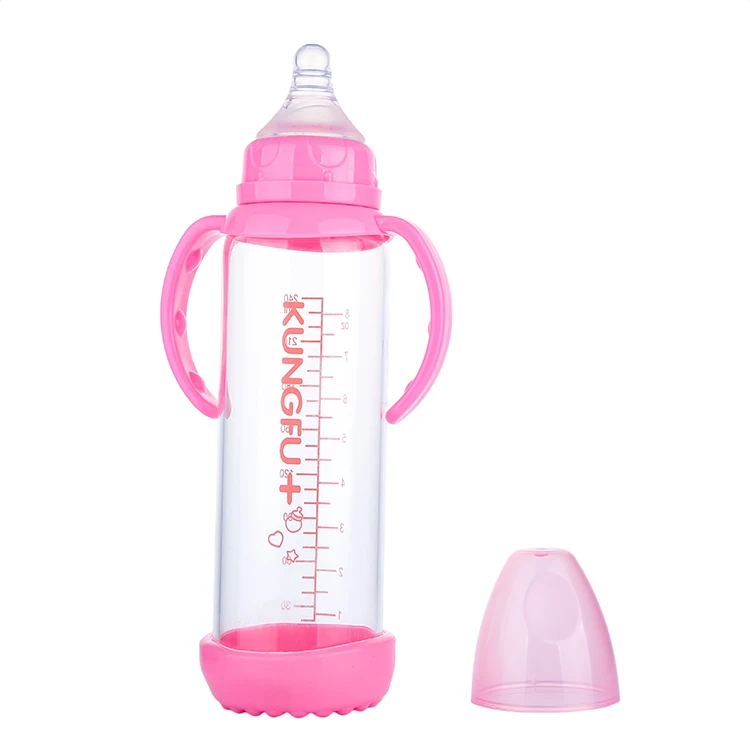 All food must be fresh.
All food must be fresh.
Babies start eating on their own
Granules include the necessary vitamin premixes. Their size varies, so a serving per individual is considered 3% of the individual's weight. Carrots, cabbage leaves are crushed at first, then they begin to be given in large pieces. Beets, potatoes, turnips are given only for fodder, not more than 1-2 times a week. Dry food must be moistened, otherwise they irritate the respiratory tract of rabbits. Animals should always have access to clean drinking water.
Monthly rabbit food pyramid
Always leave only hay and water in the feeding area. The rest of the food is laid according to the regimen, the remains are removed daily.
| Feeding norms for a rabbit from 1 month. Gram per day for 1 individual | |
|---|---|
| Concentrated granules | 40-60 g |
| Hay | 120-150 g |
| Grass | 300-500 g |
| Vegetables, roots | 150-200 g |
In winter, the norms are calculated according to the upper permissible limit.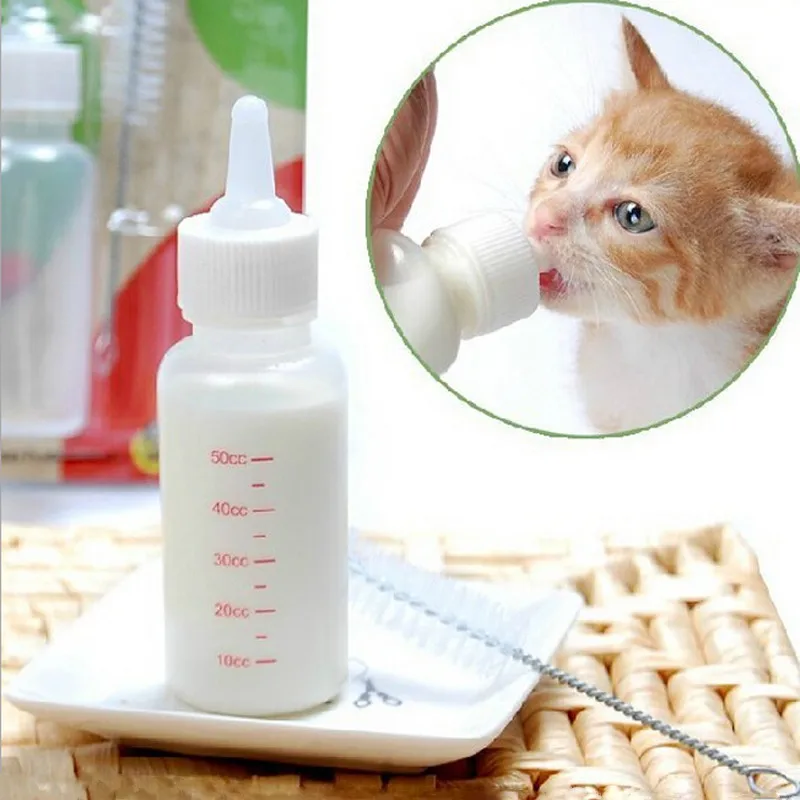 In summer, the amount of grass is increased, and the granular feed is reduced to a minimum.
In summer, the amount of grass is increased, and the granular feed is reduced to a minimum.
Granular food
It is forbidden to feed baby rabbits with sprouted potatoes, wild herbs, branches of unknown trees. Many breeds are poisonous to these animals; it is necessary to study acceptable plants in advance. Food with mold, rot, dirt, fungus, frozen areas can also cause irreparable harm to the pet's body.
See also: What not to feed rabbits
In this article, you can get acquainted with prohibited foods for rabbits, as well as what food will keep their health in order.
Feedings
The milk of a healthy rabbit can provide the offspring with all the necessary vitamins. On artificial feeding, newborn animals need help in the form of feeding. Ready mix substitutes often already contain premixes. In their absence, special preparations are added to natural milk on their own:
Premixes may also be present in pelleted feed.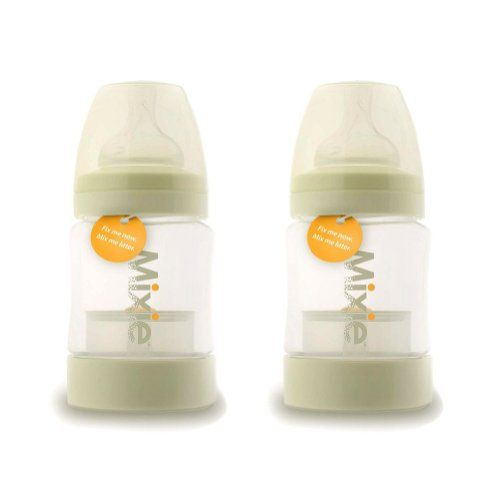 From day 31, you need to make sure that the total amount of top dressing is within the acceptable range.
From day 31, you need to make sure that the total amount of top dressing is within the acceptable range.
Experienced zookeepers recommend giving the following mixture during the feed change period:
- 4 parts of hay or grass meal;
- 3 parts barley;
- 2 parts peas or corn;
- 2 parts sunflower meal;
- 1 part wheat bran.
Homemade dressing
All ingredients are ground into coarse flour and given a pinch from the 20th day. From day 31, all or part of the pelleted feed can be replaced with this mixture.
Advantages and disadvantages of artificial feeding of young animals
Artificial feeding is always a last resort when raising offspring. The main disadvantage of this approach is the inability to give the kids the whole set of necessary trace elements. All substitutes remain only close to rabbit milk. A product from other animals, mixtures, one way or another, remain unbalanced specifically for rabbits.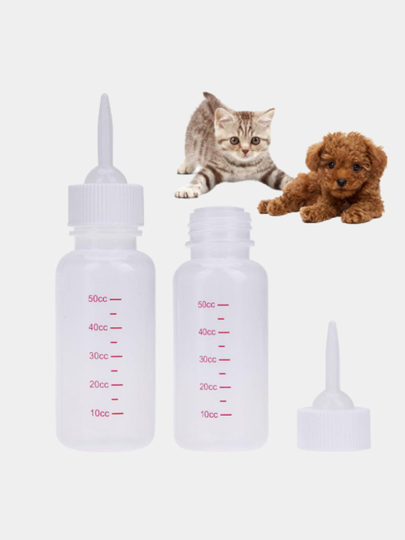
Baby rabbits get all the nutrients they need when fed naturally. This process often causes difficulties, slows down the formation of the swallowing reflex. In addition, there is a risk of making incorrect actions and harming the animal, and getting a substitute for native milk can be problematic and expensive. Another disadvantage is the need for a person to be present almost all day.
Plus of artificial feeding - unpretentiousness of rabbits in terms of nutrition
The main advantage of artificial feeding is the unpretentiousness of rabbits in terms of nutrition. Such animals quickly get used to new products, do not refuse top dressing because of the unusual taste, and have a good appetite. It is also easier to develop the habit of feeding on a schedule, to regulate the content of vitamins for individual ears.
Care of artificially fed rabbits
Immunity in artificially fed rabbits develops much more slowly than in offspring growing on mother's milk.